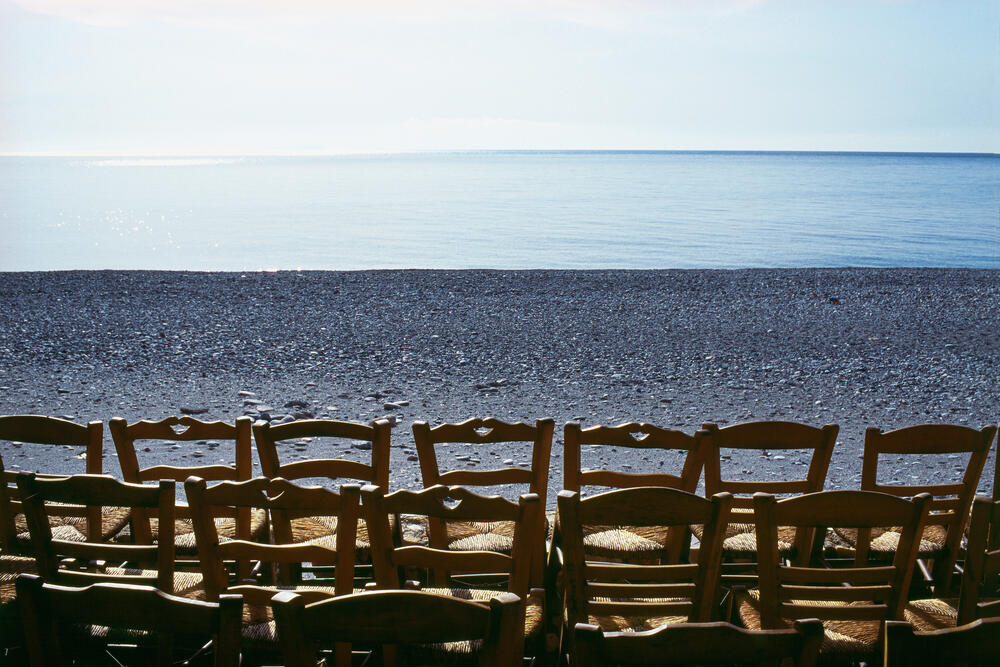


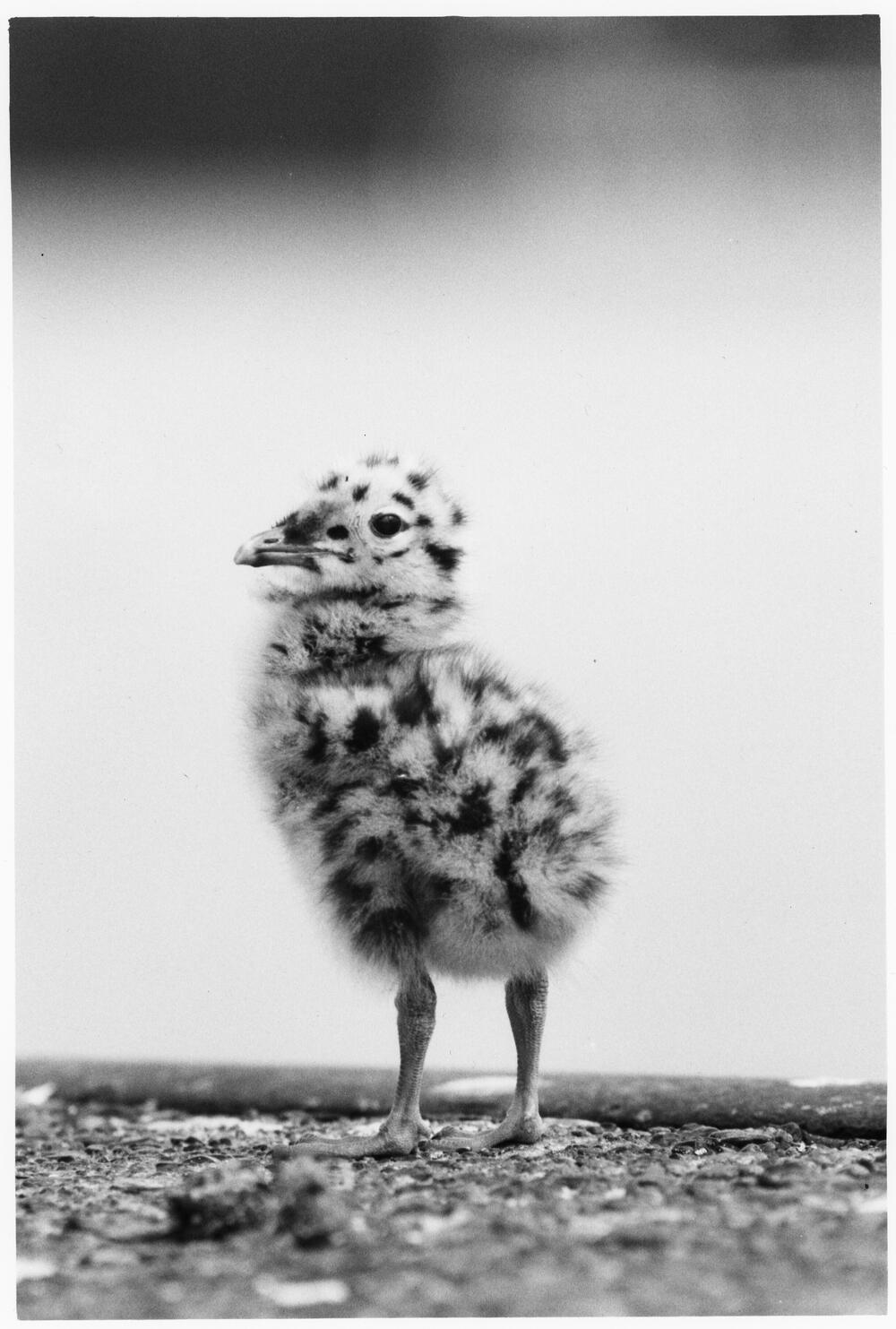
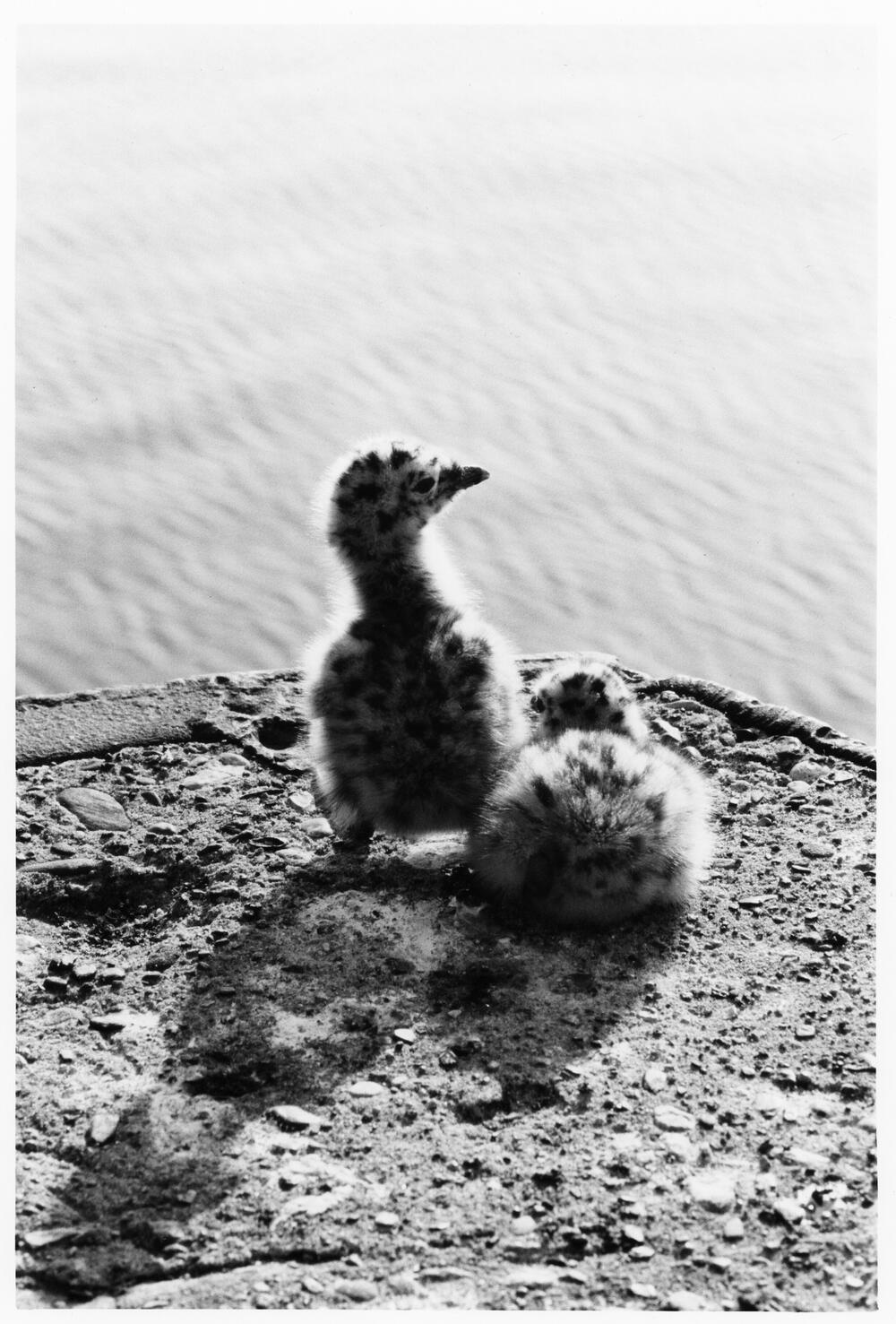
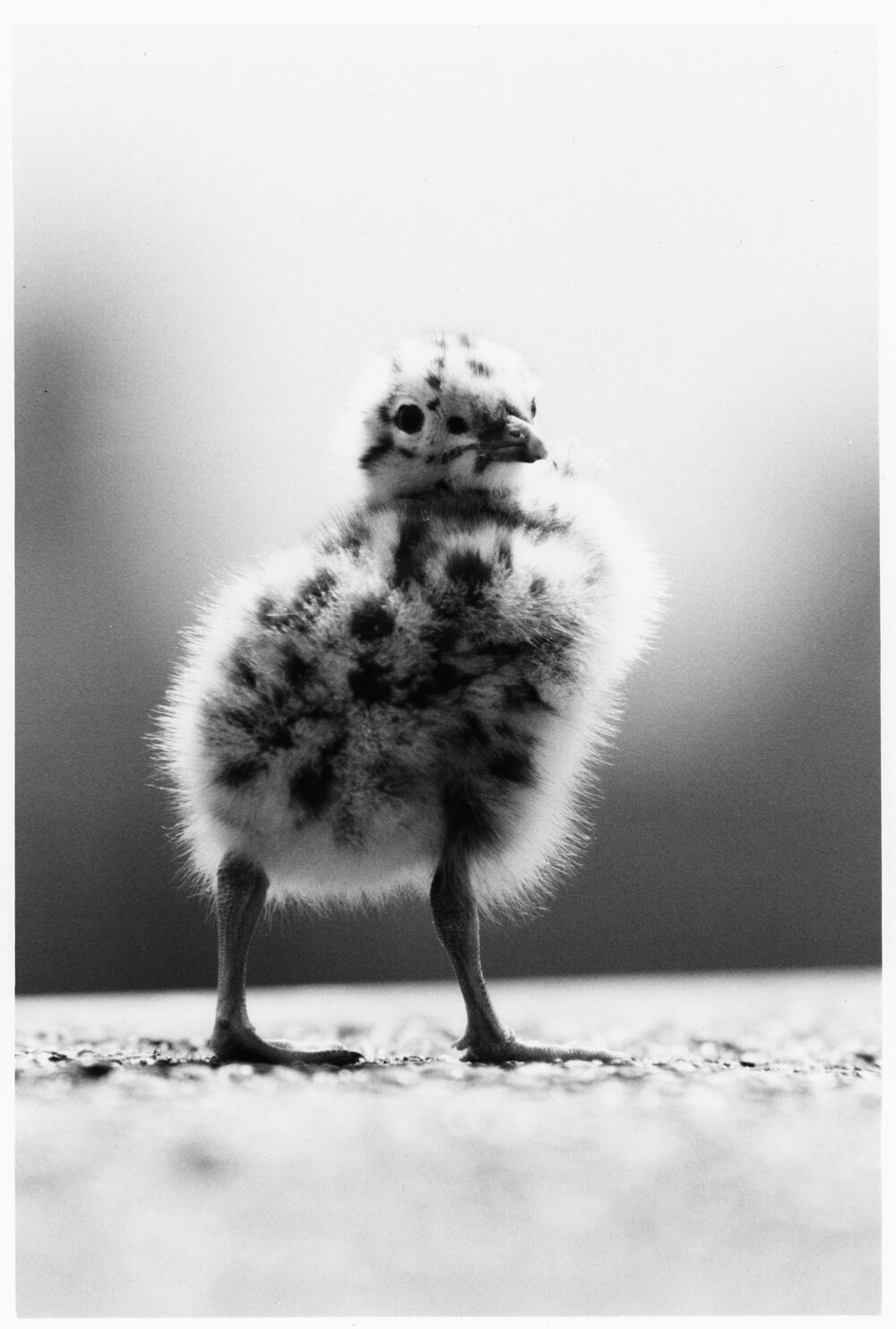



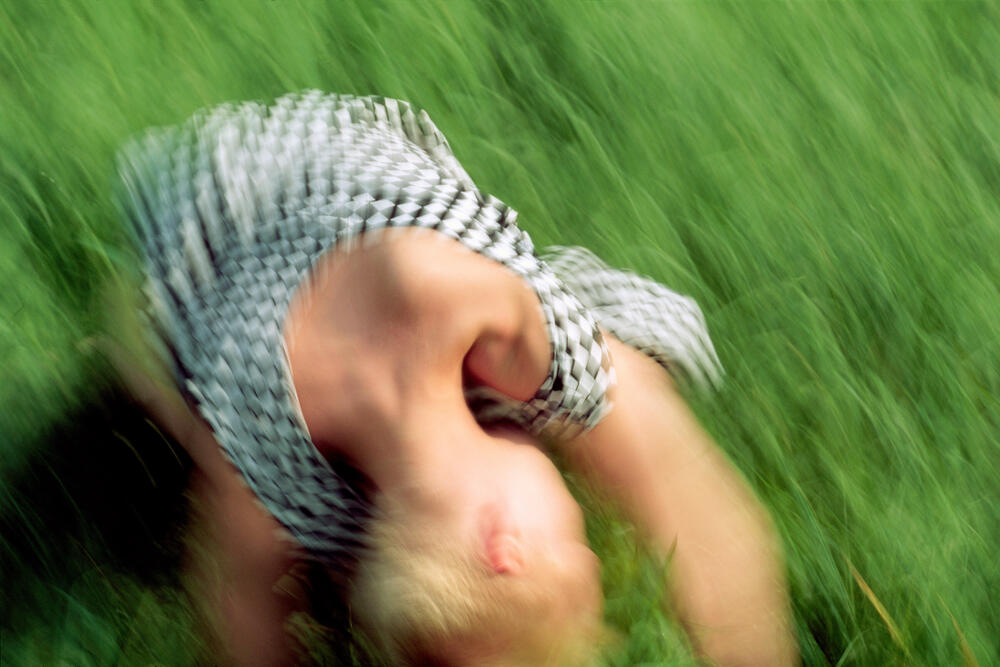
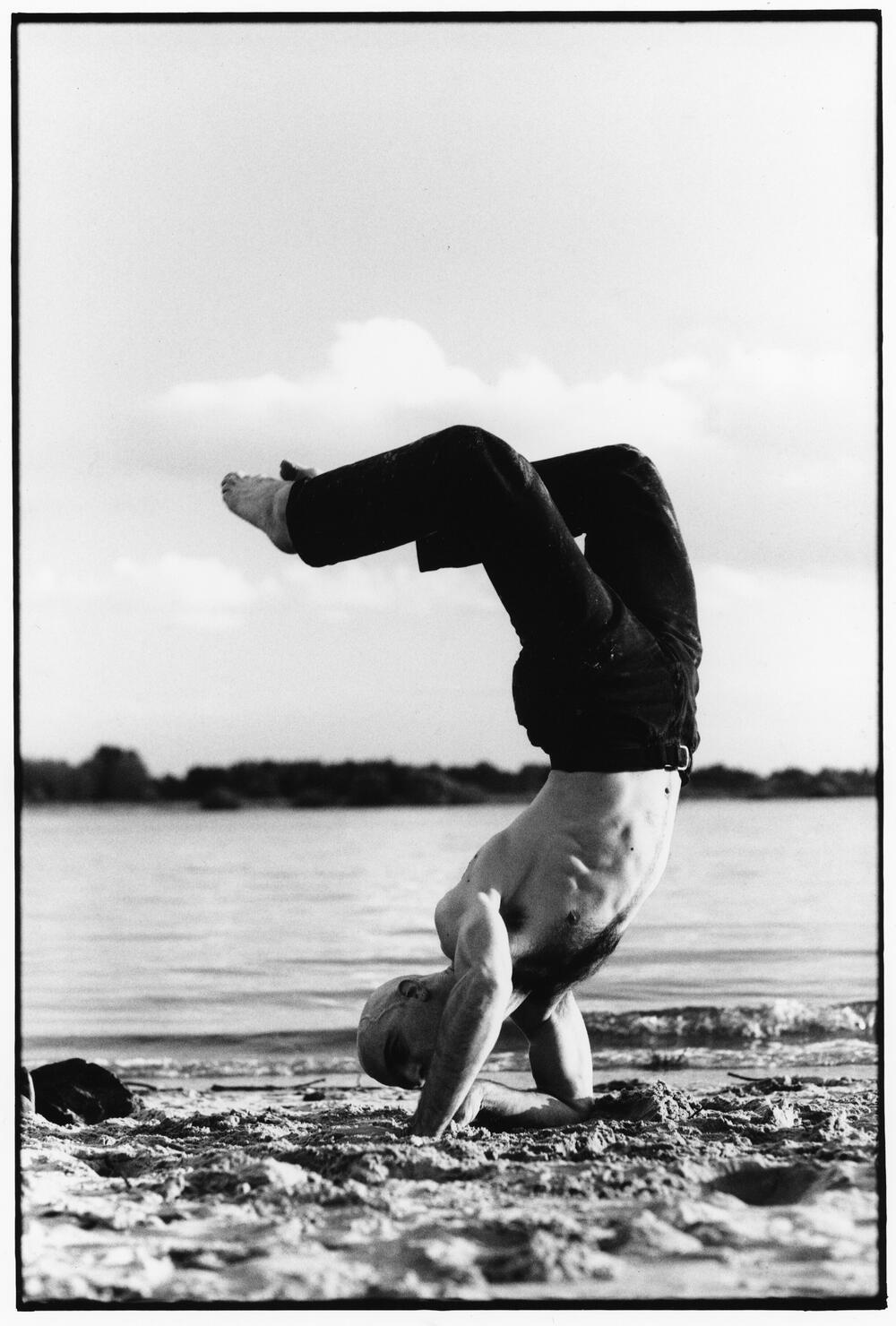
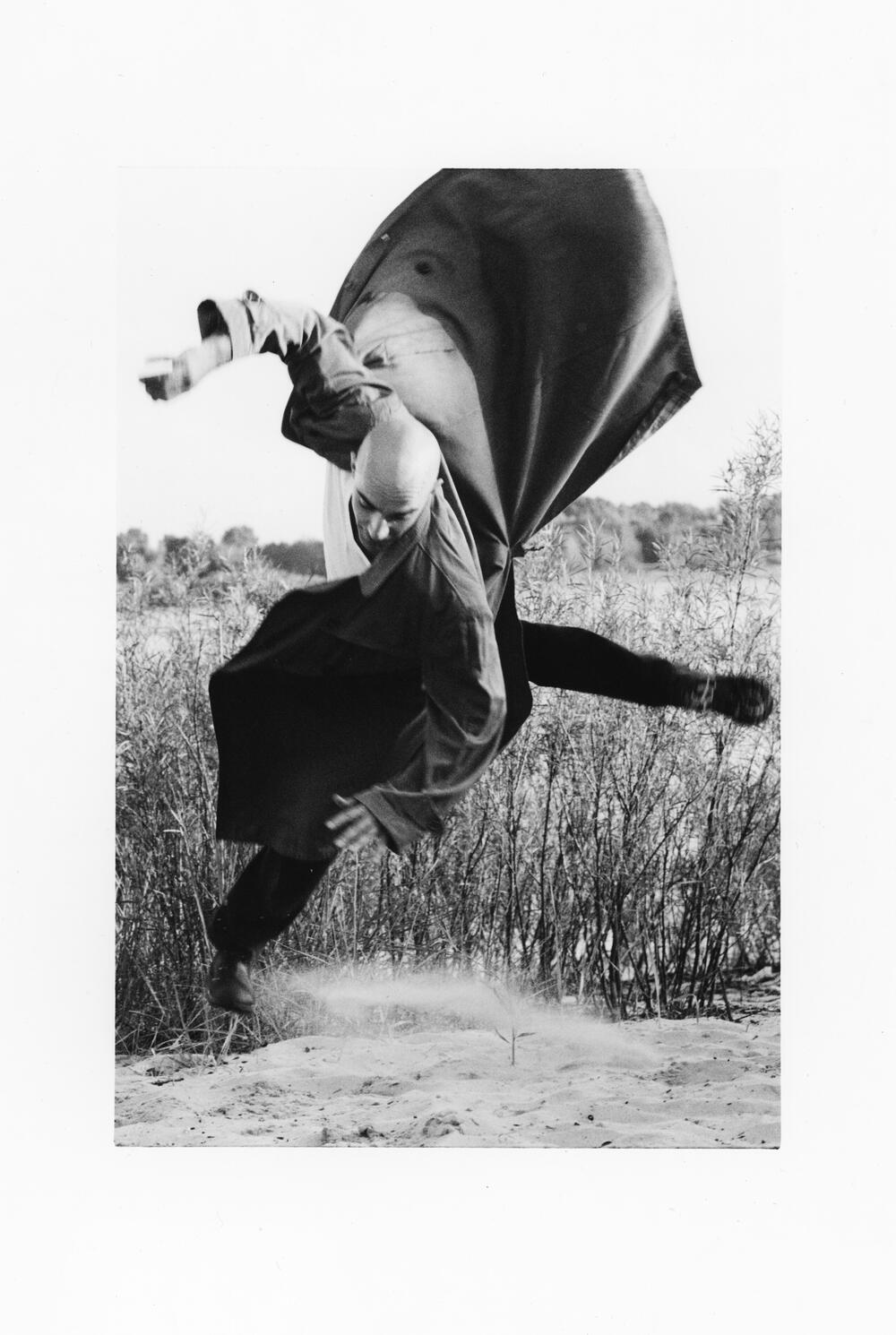
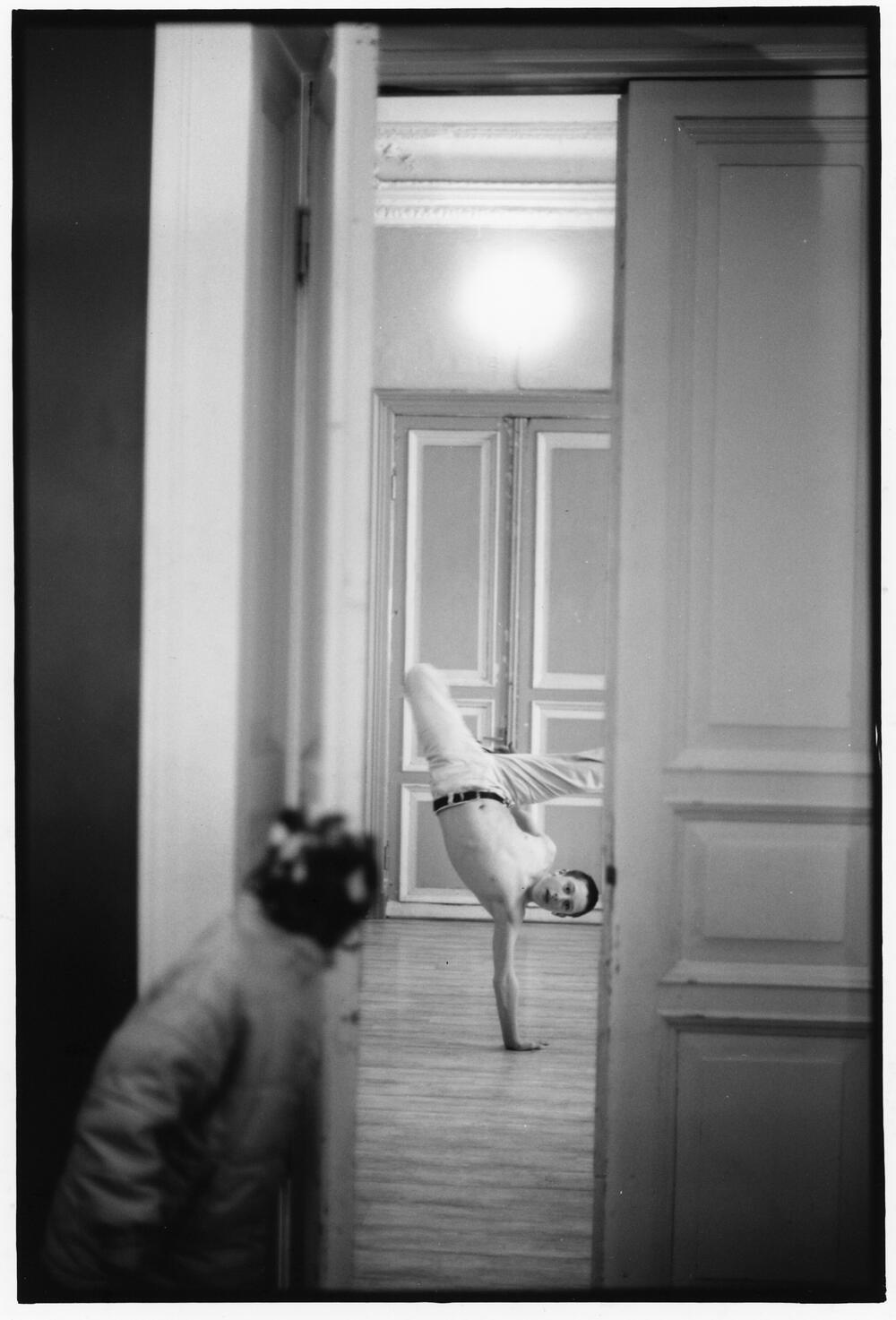
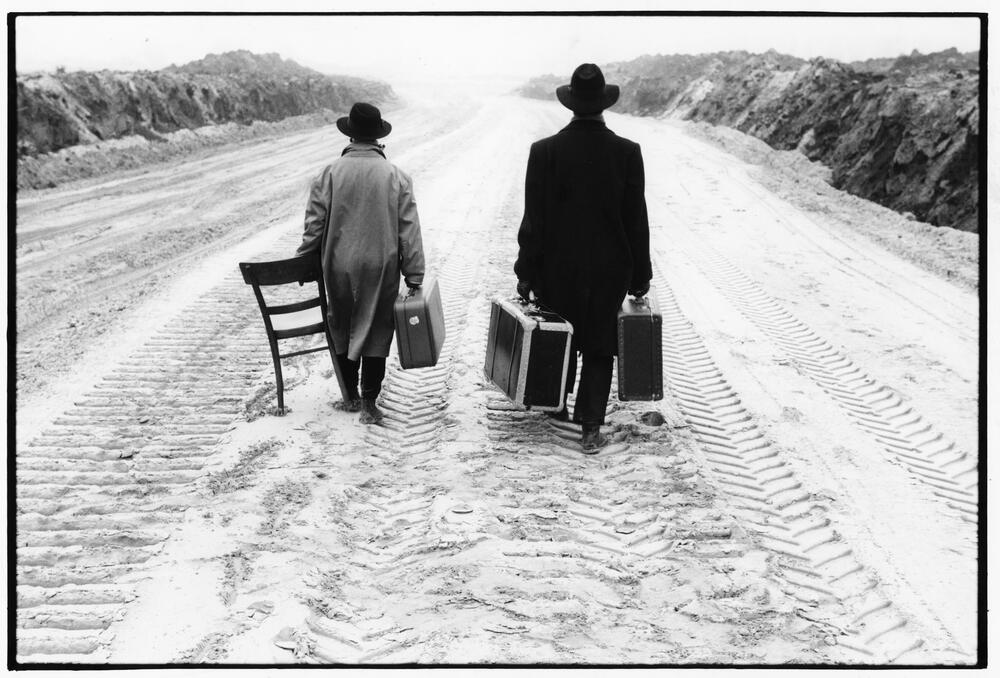
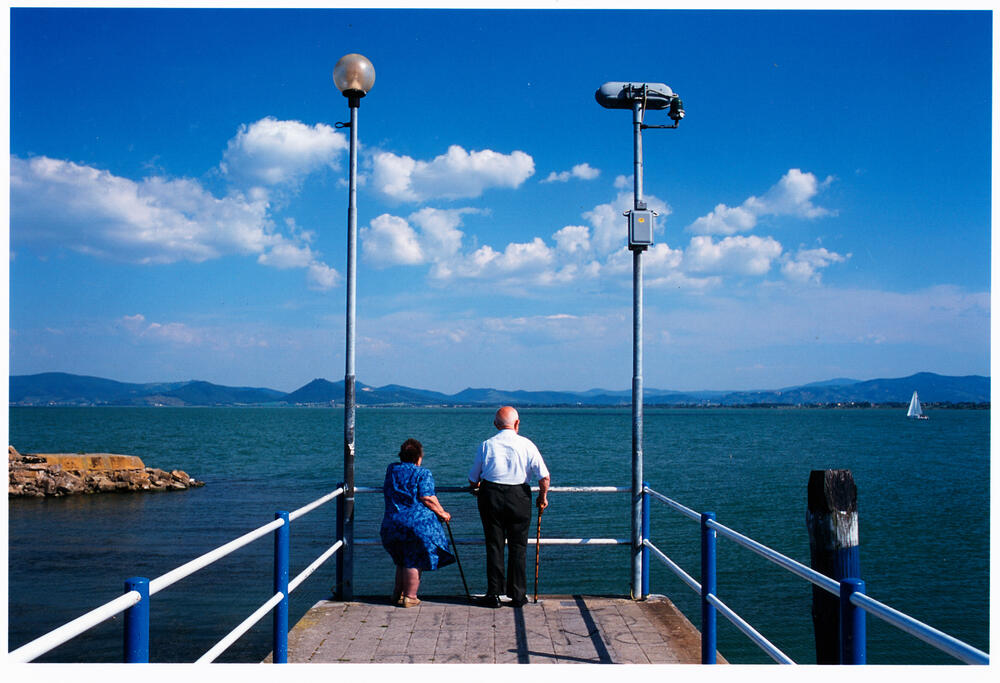
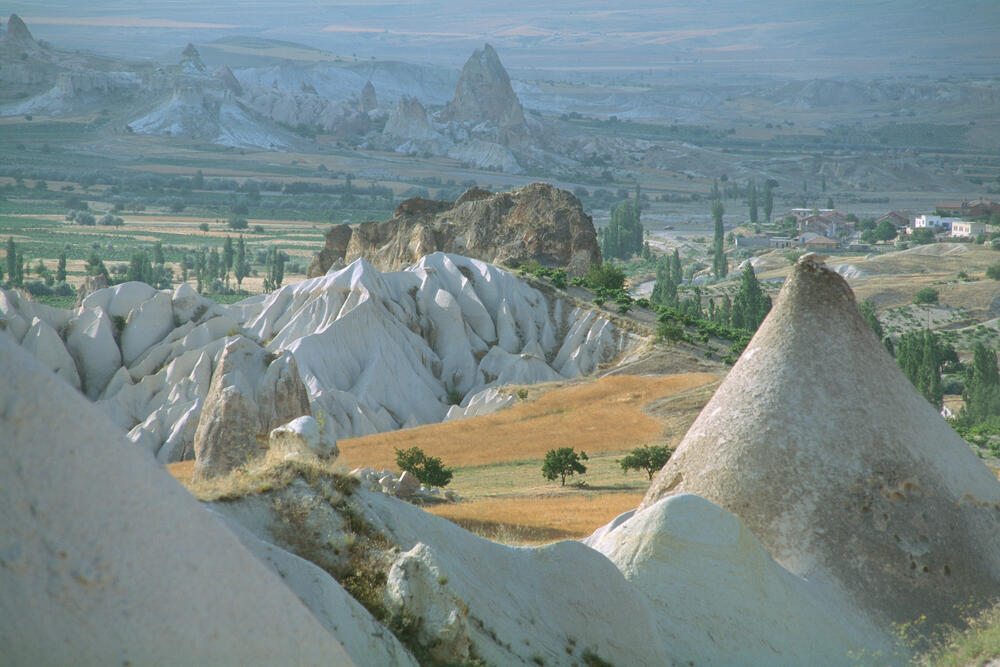
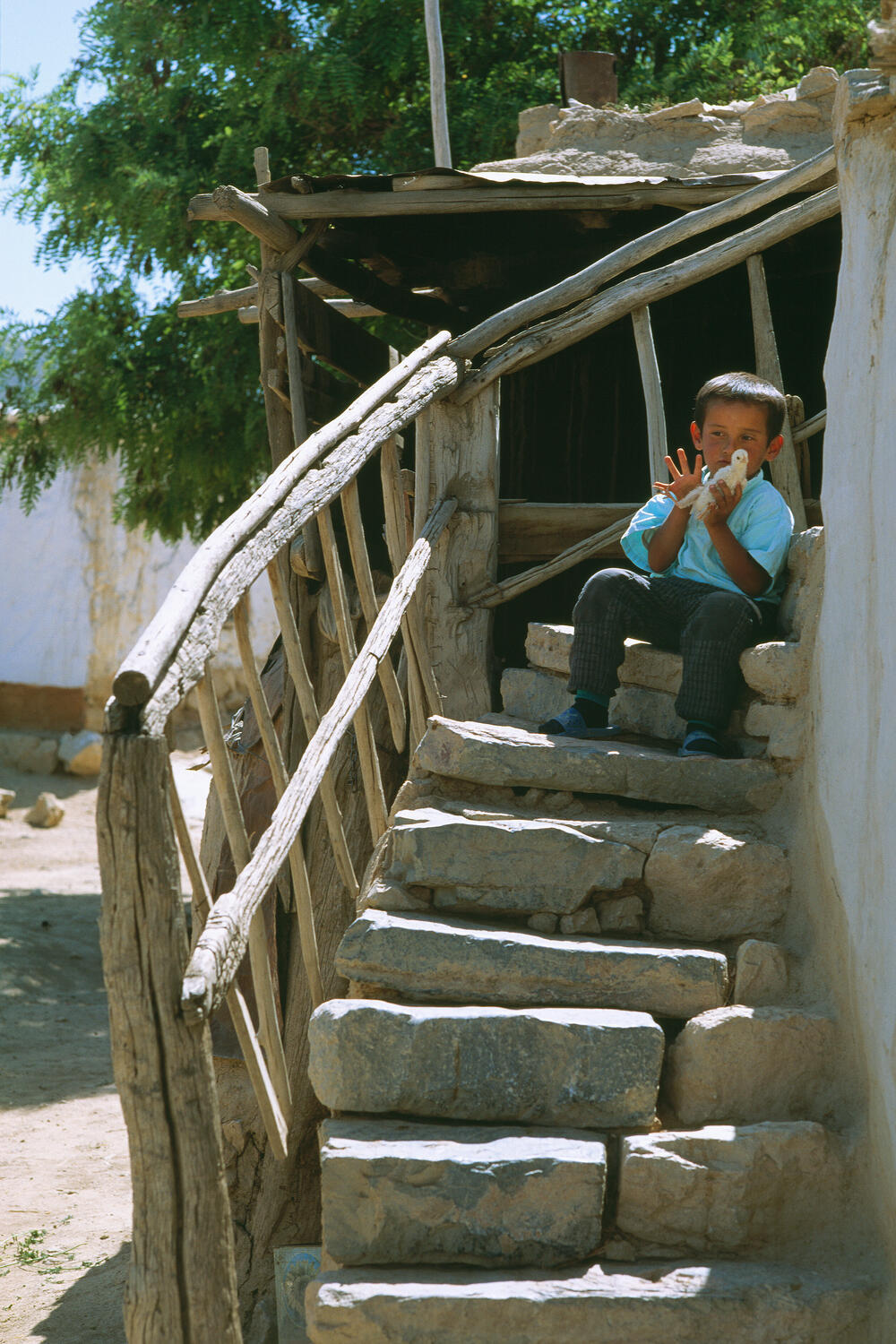
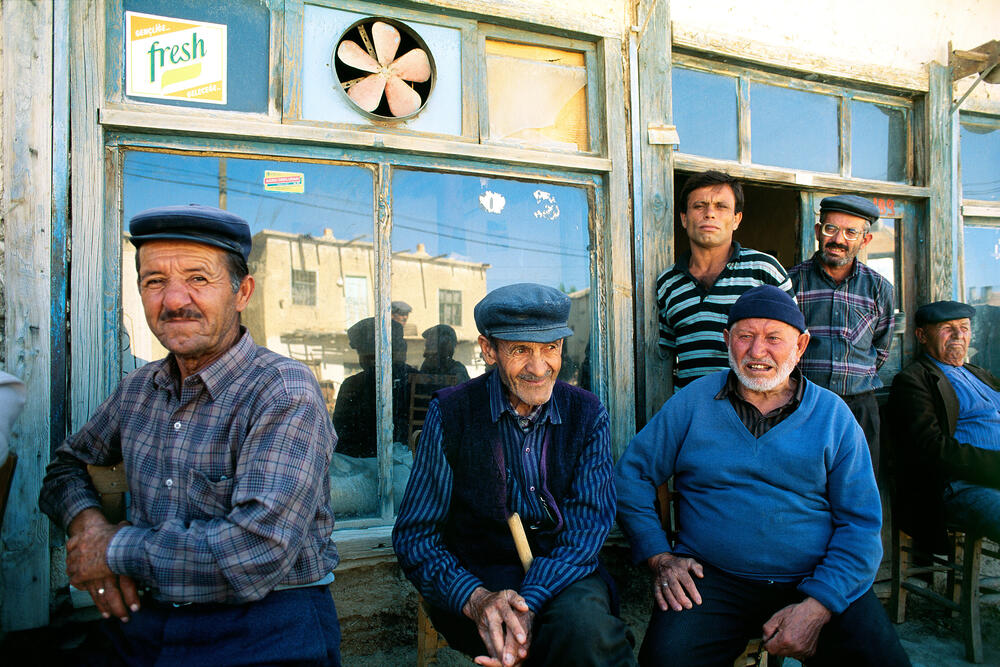
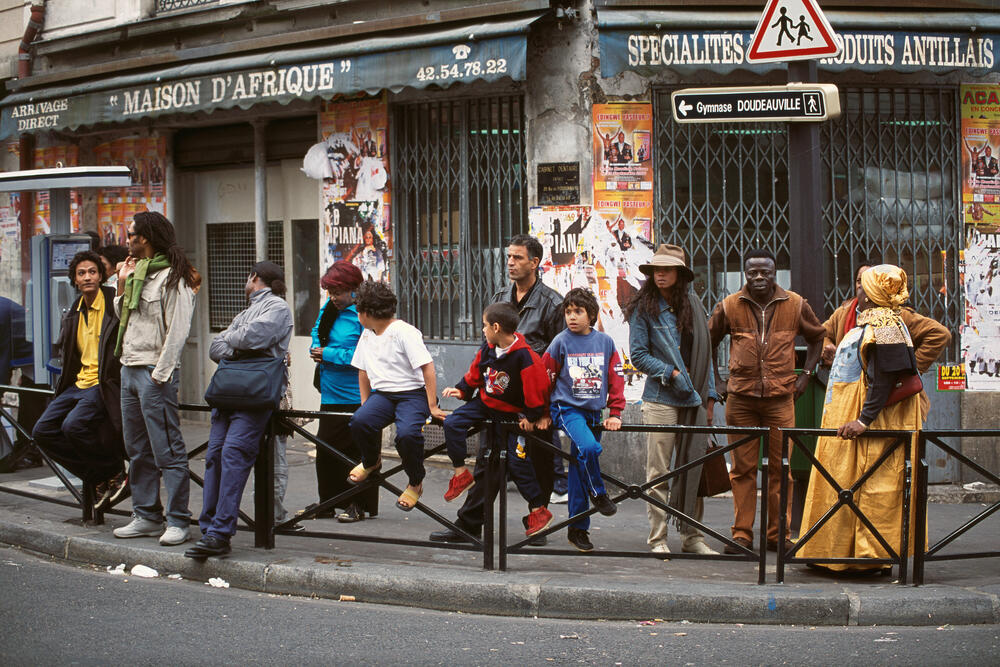
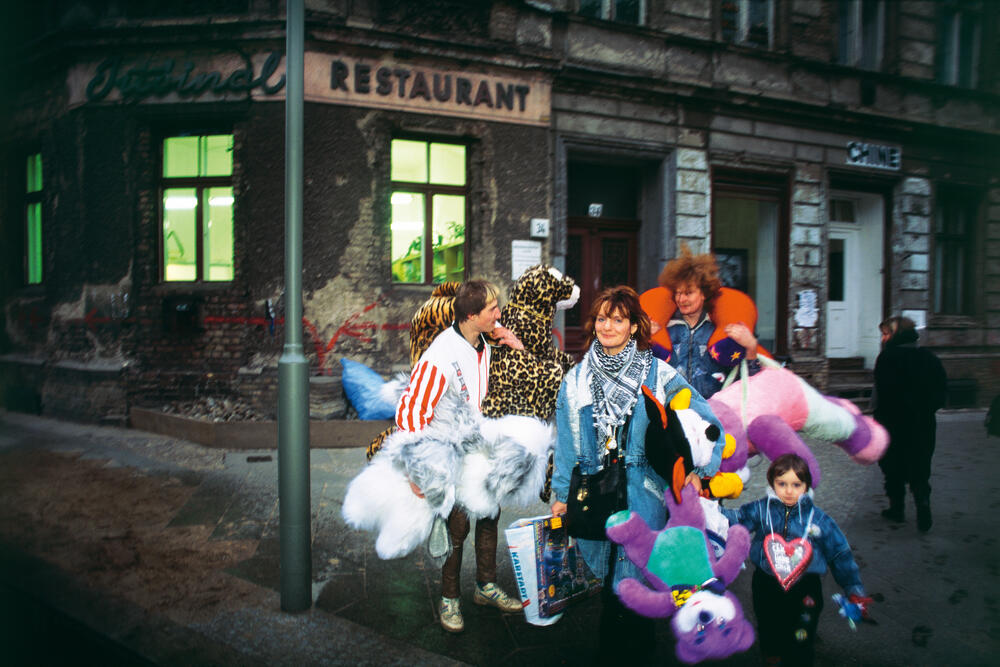
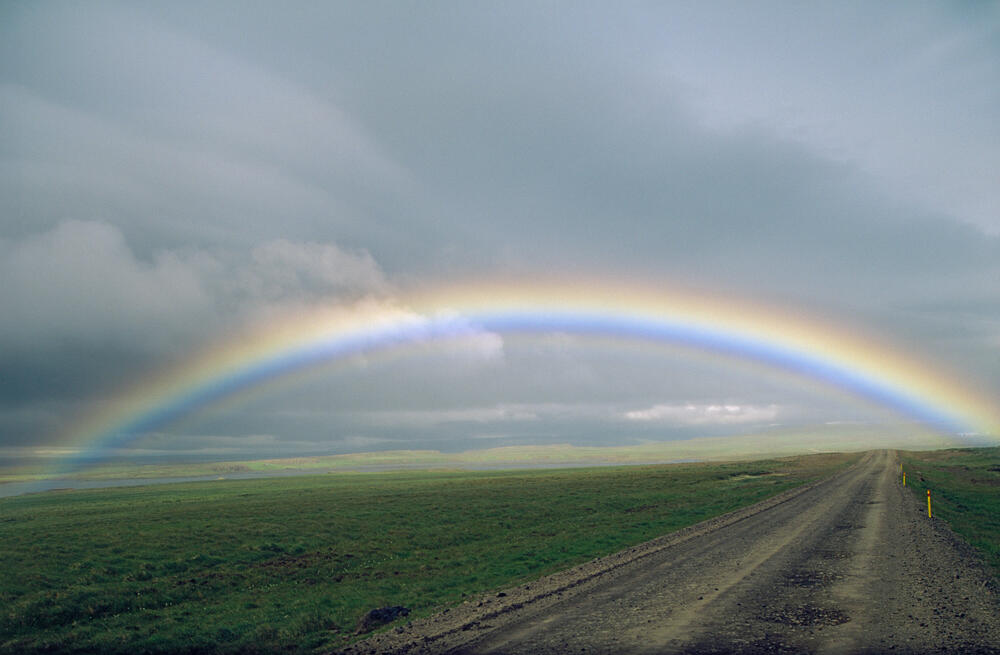
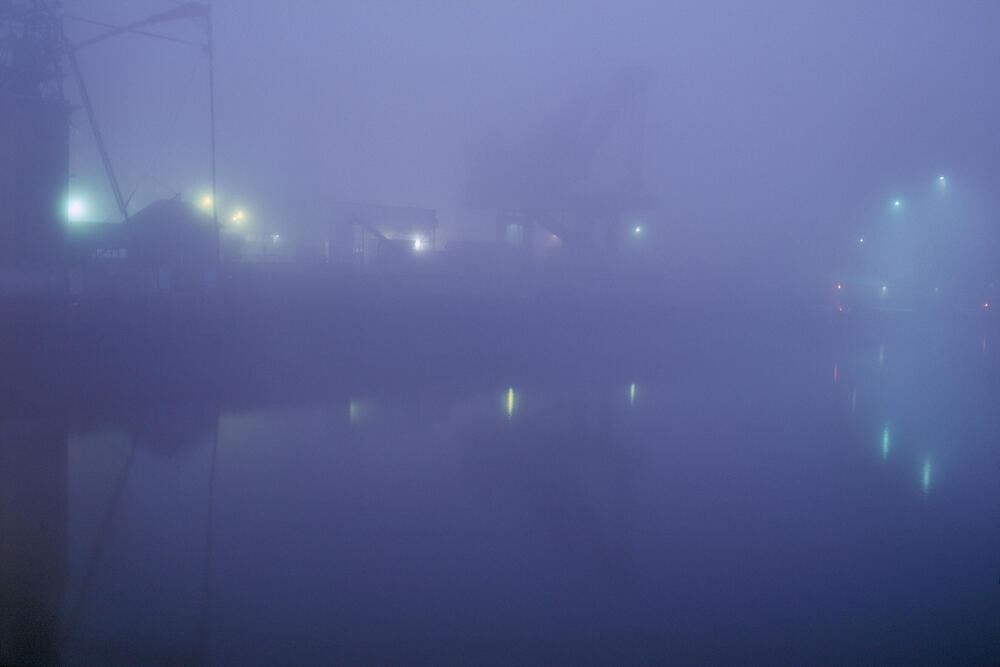
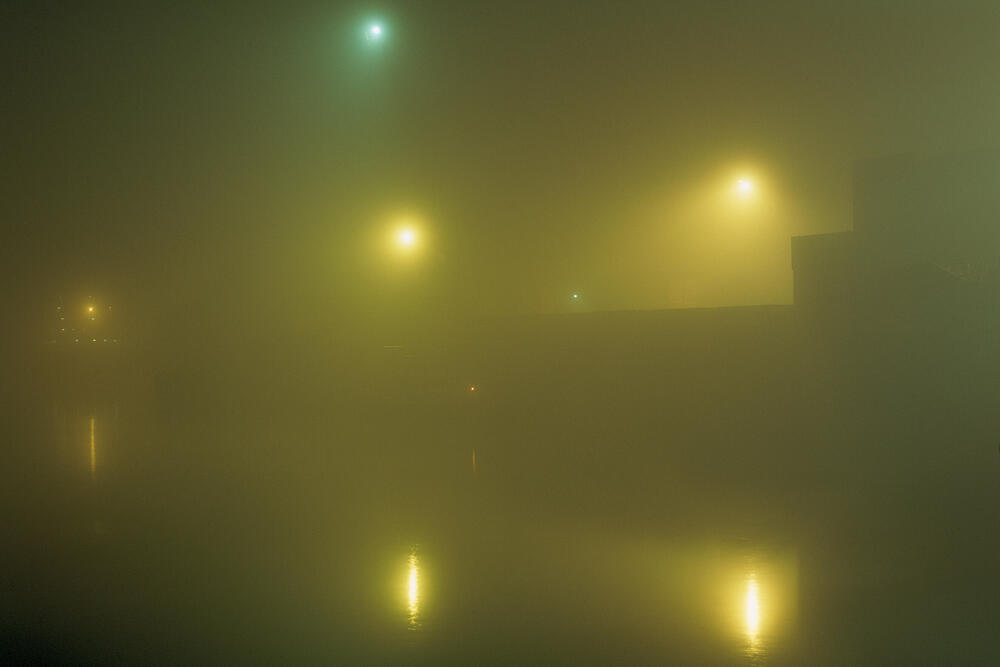


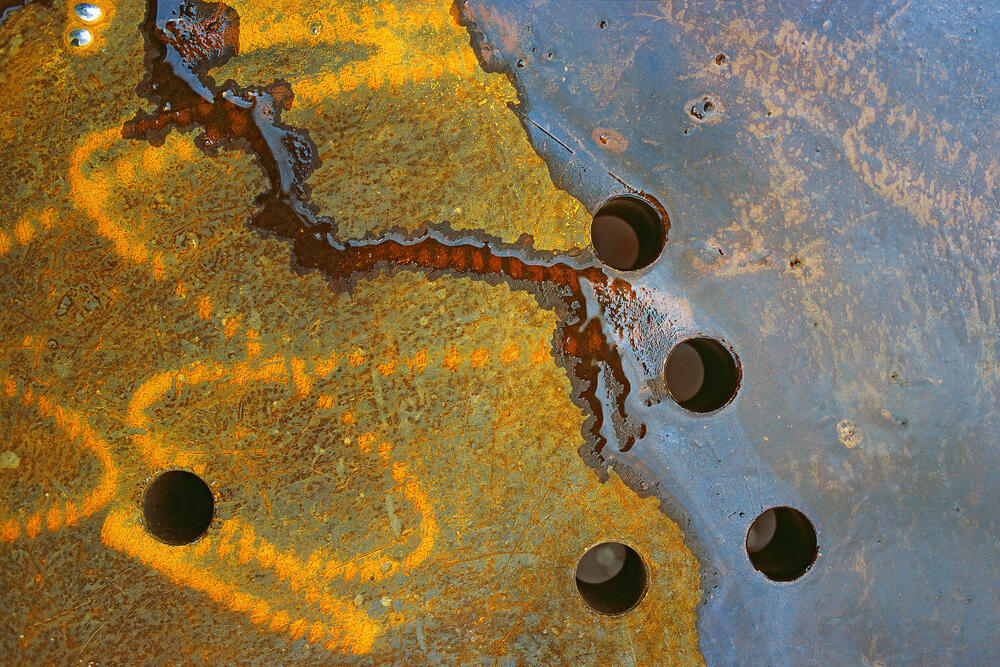
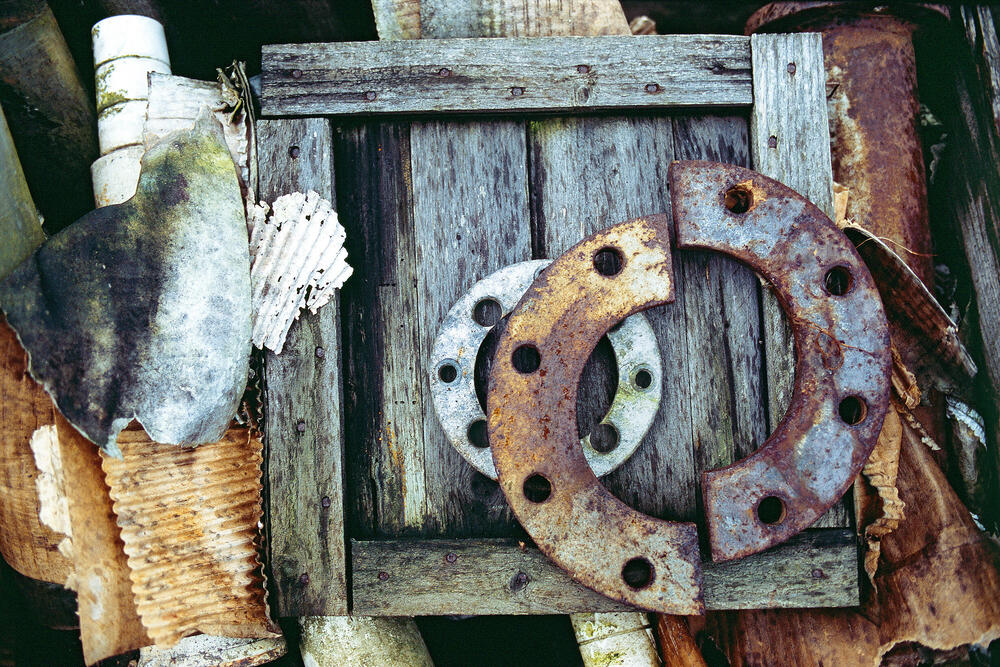
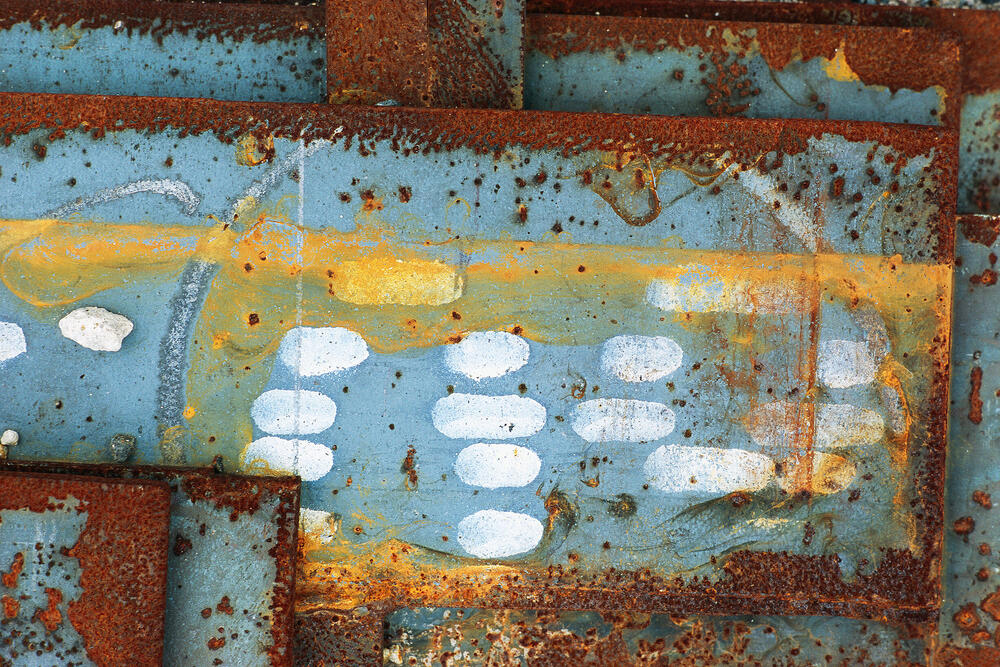



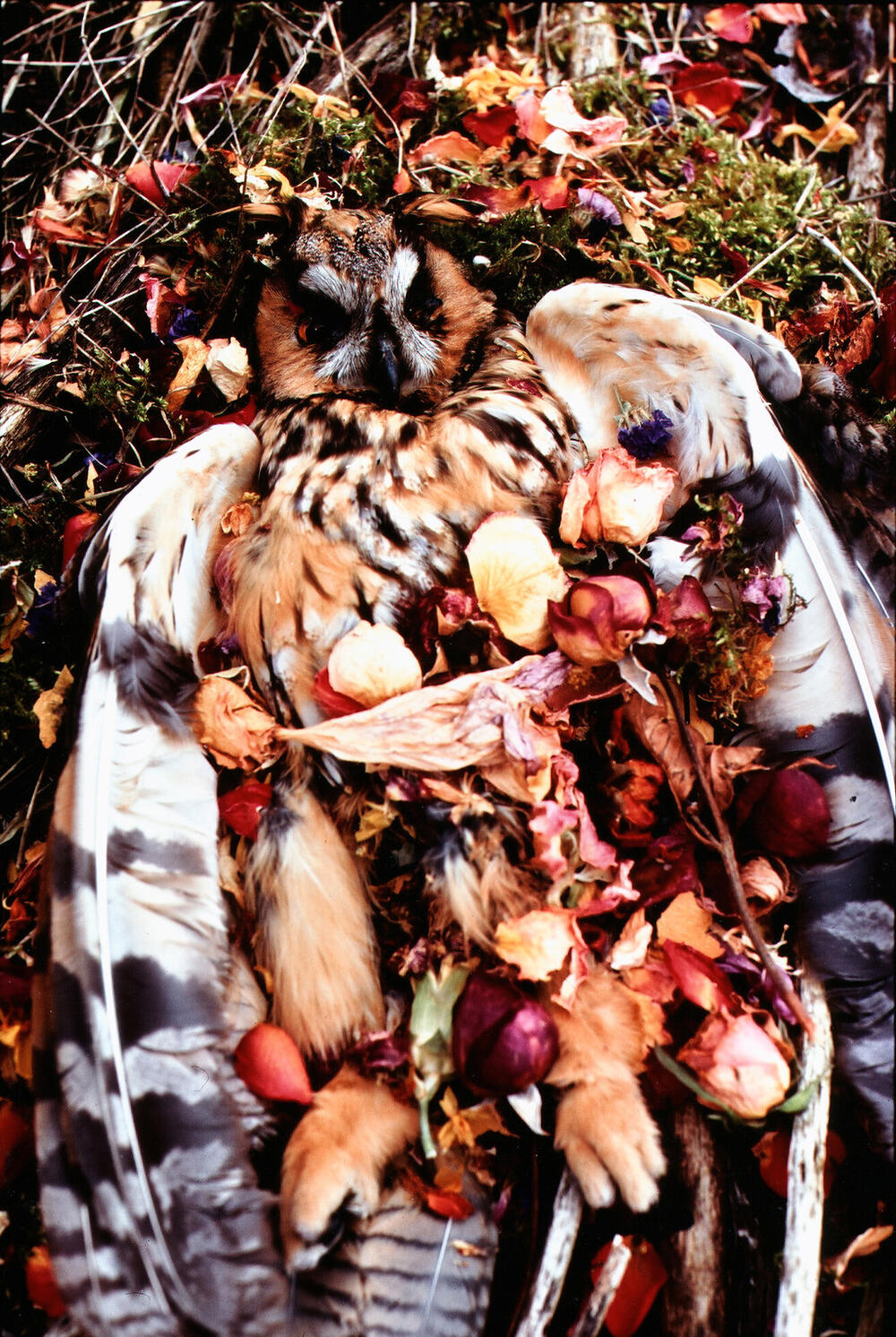
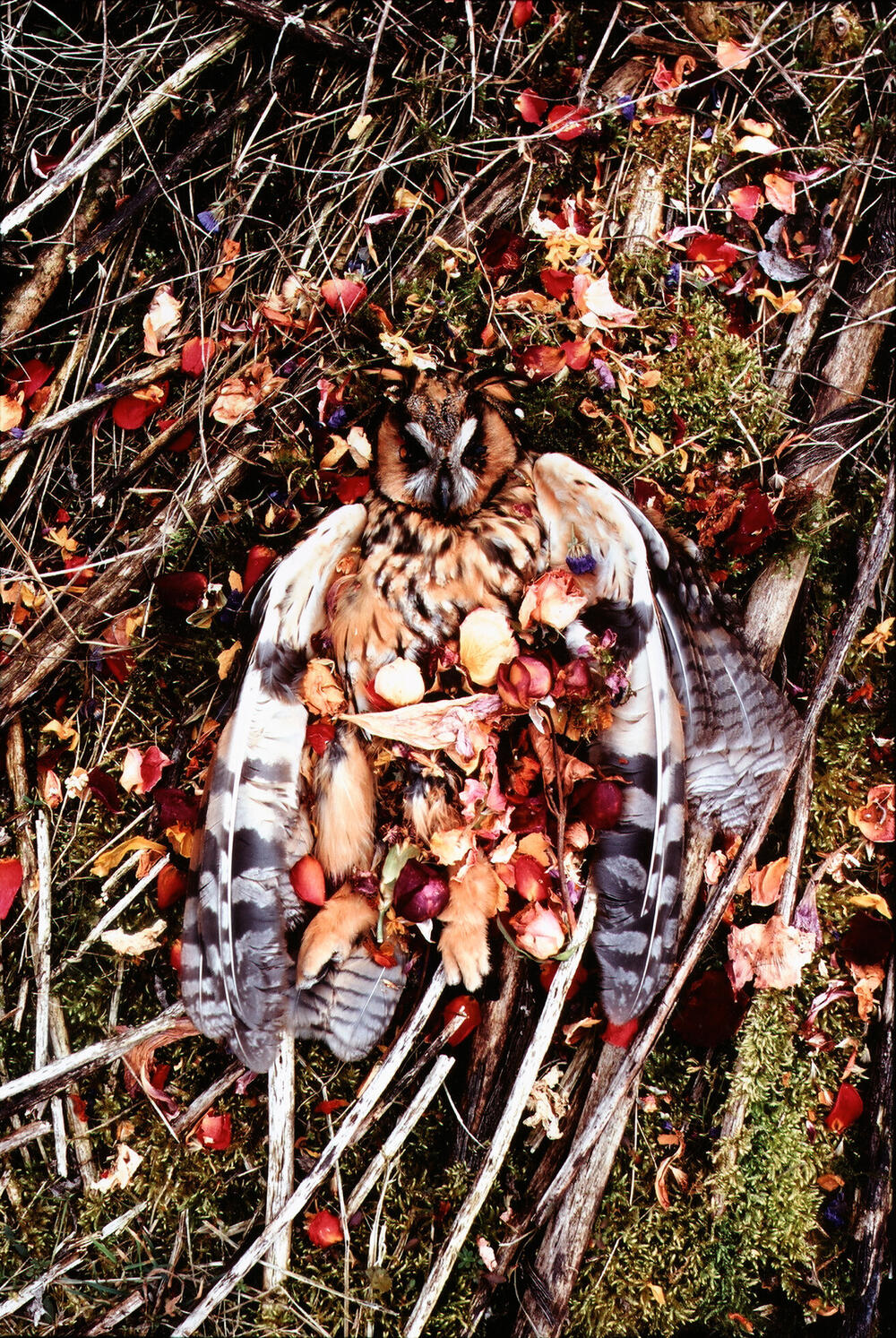


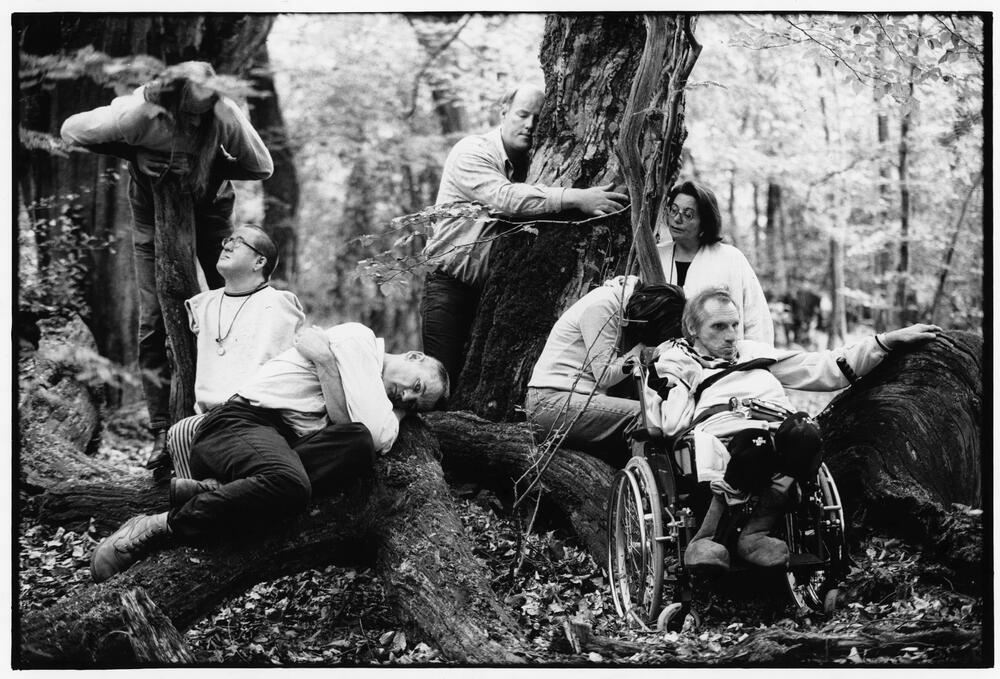
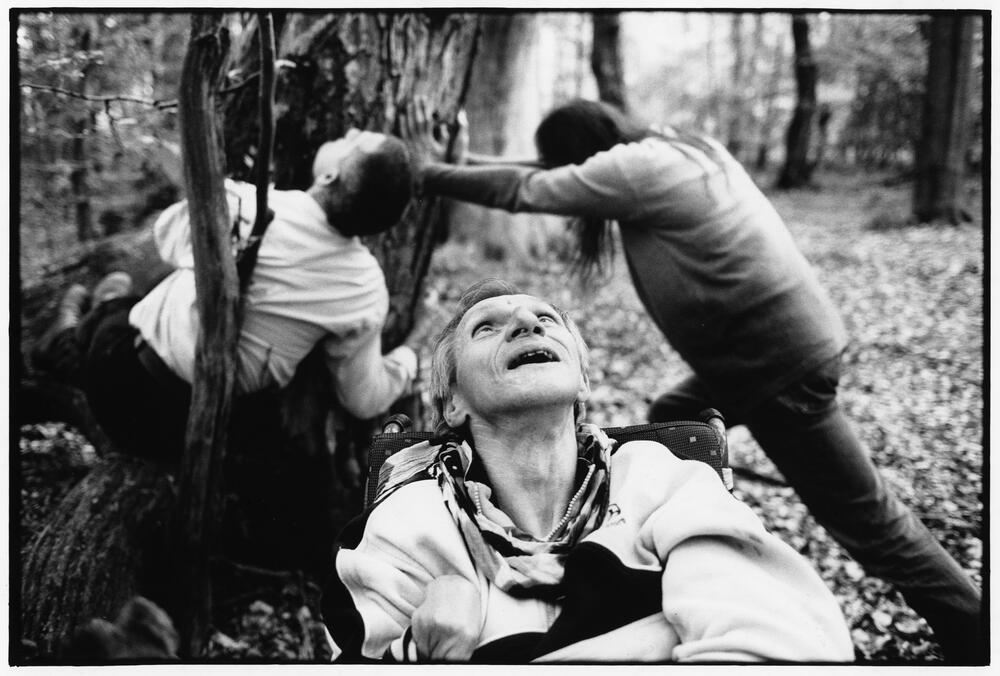
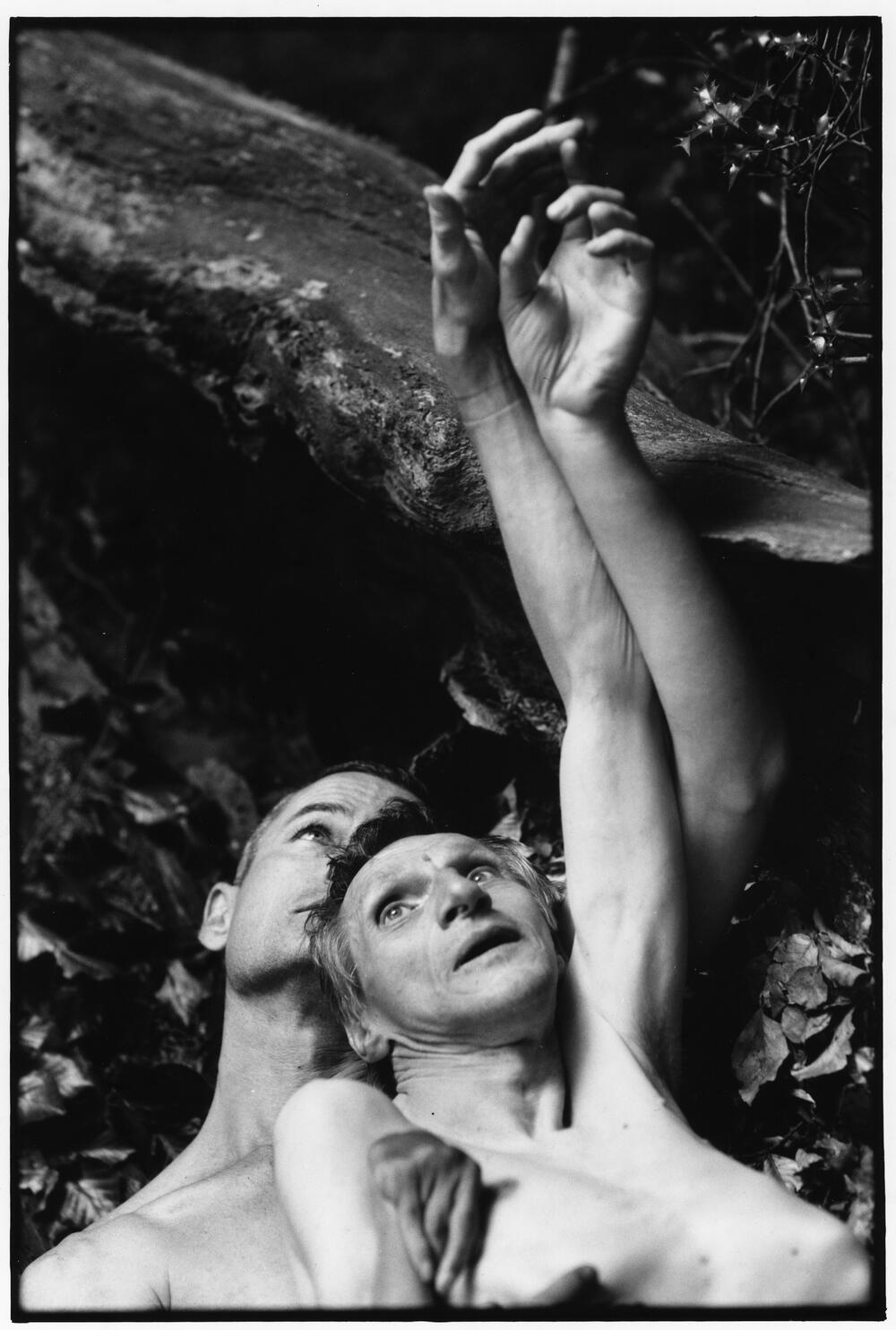
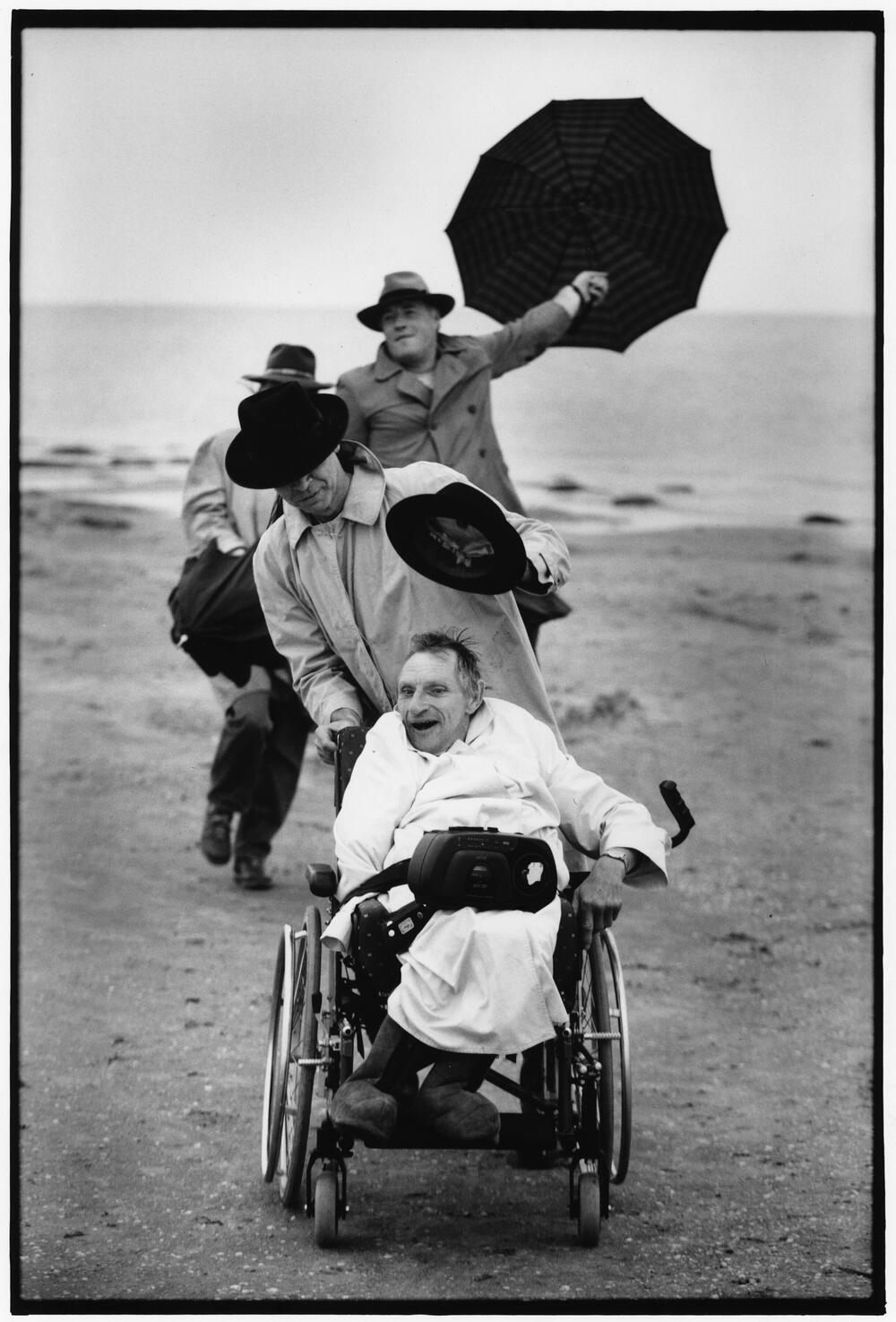
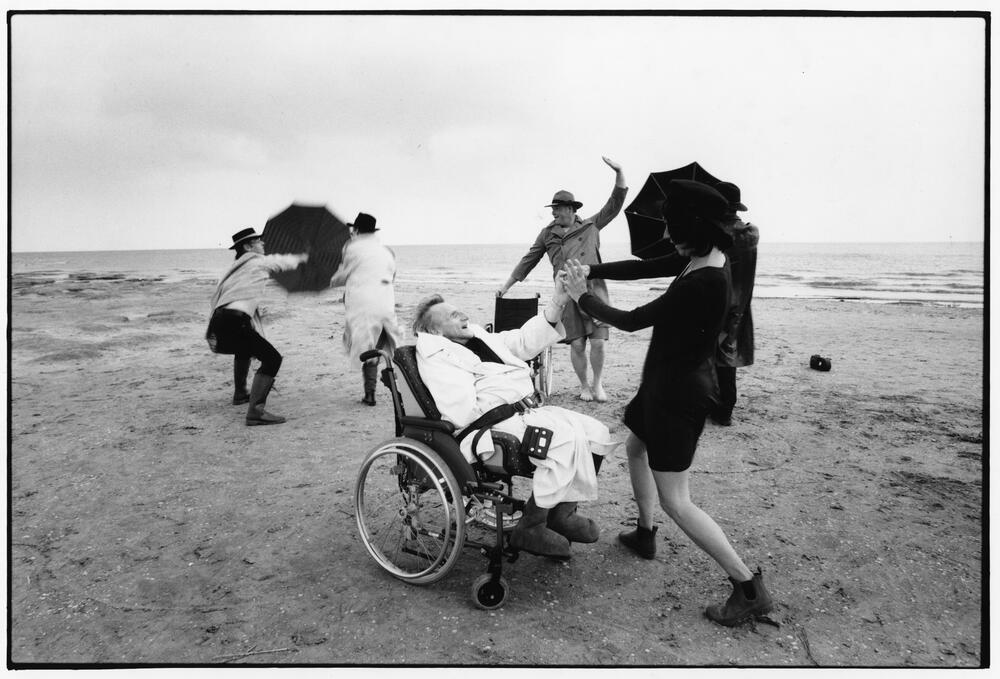
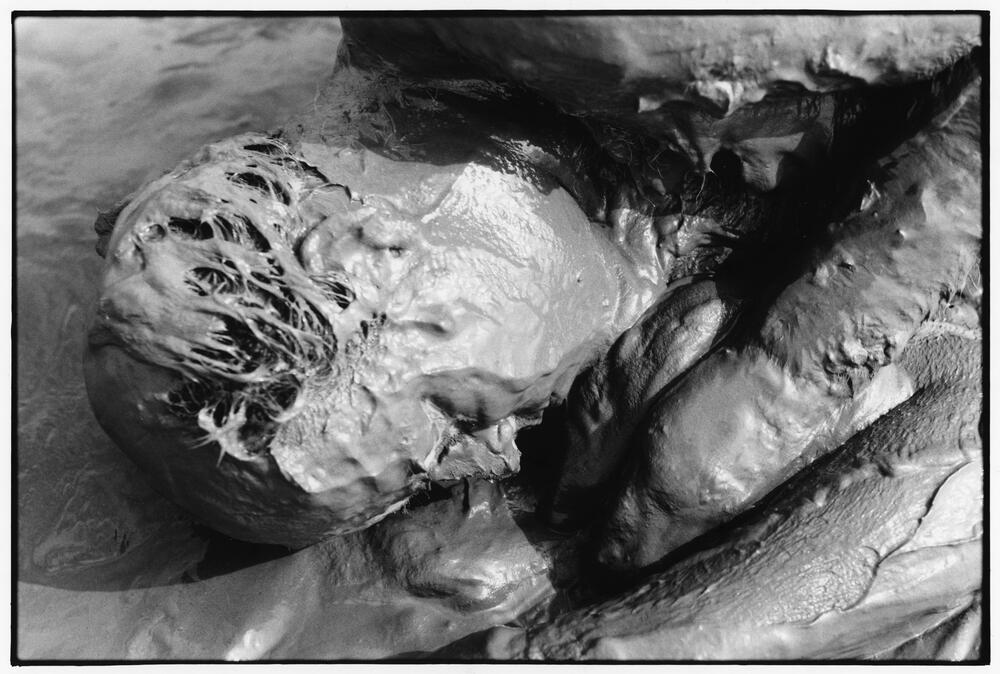






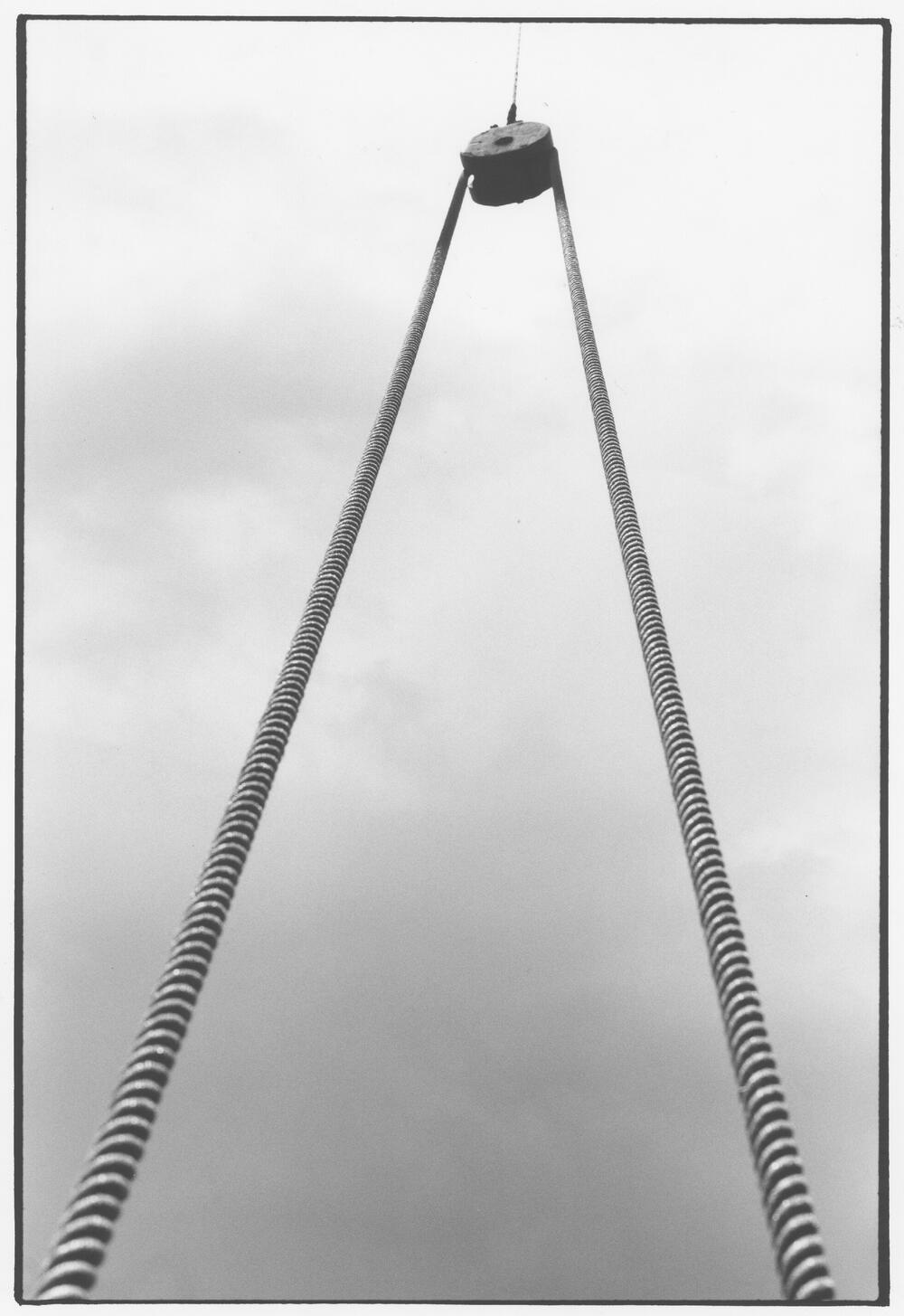
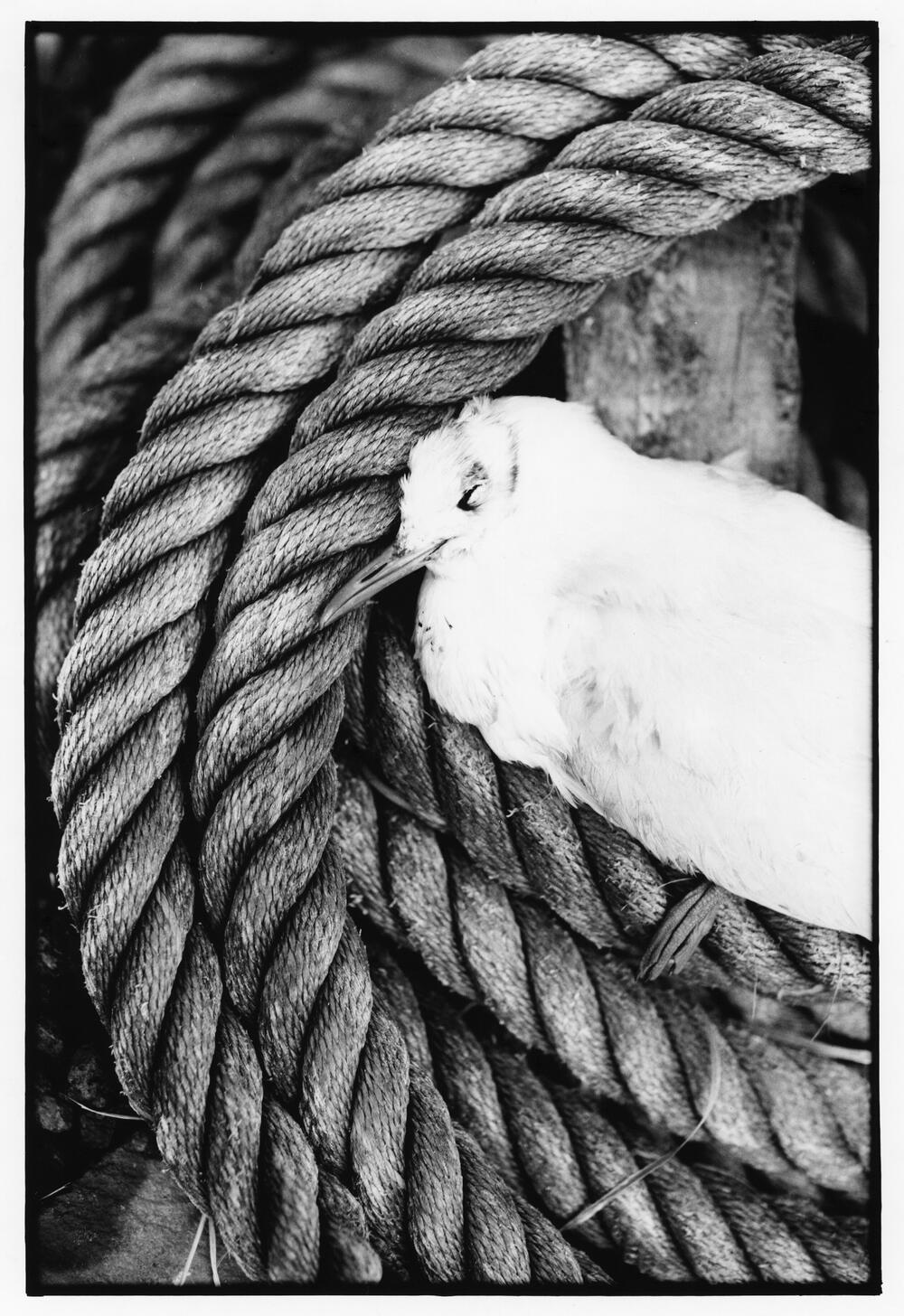
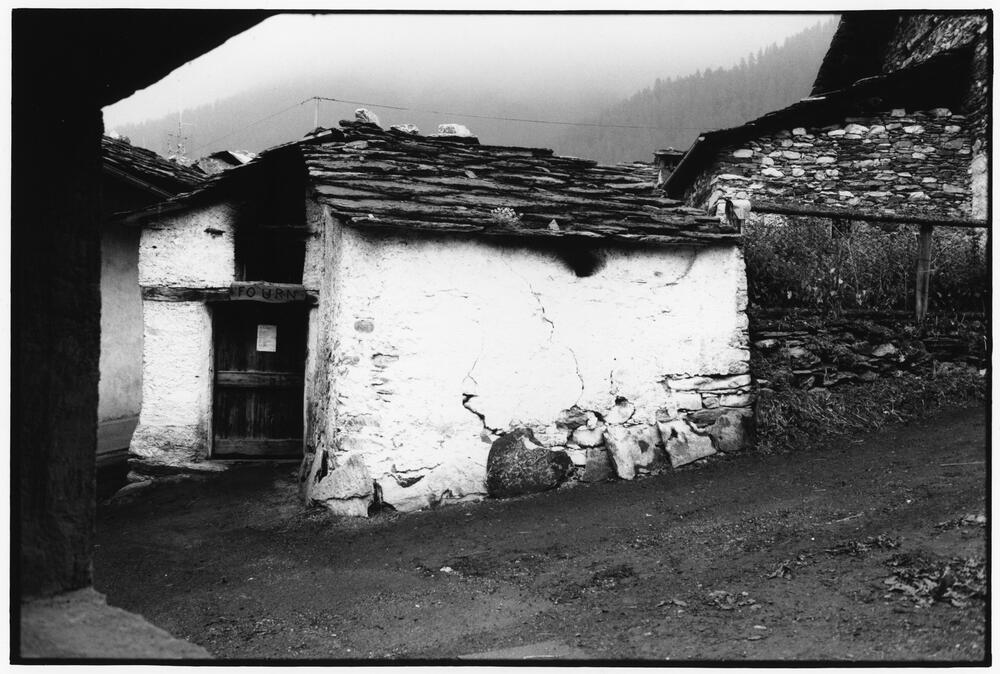
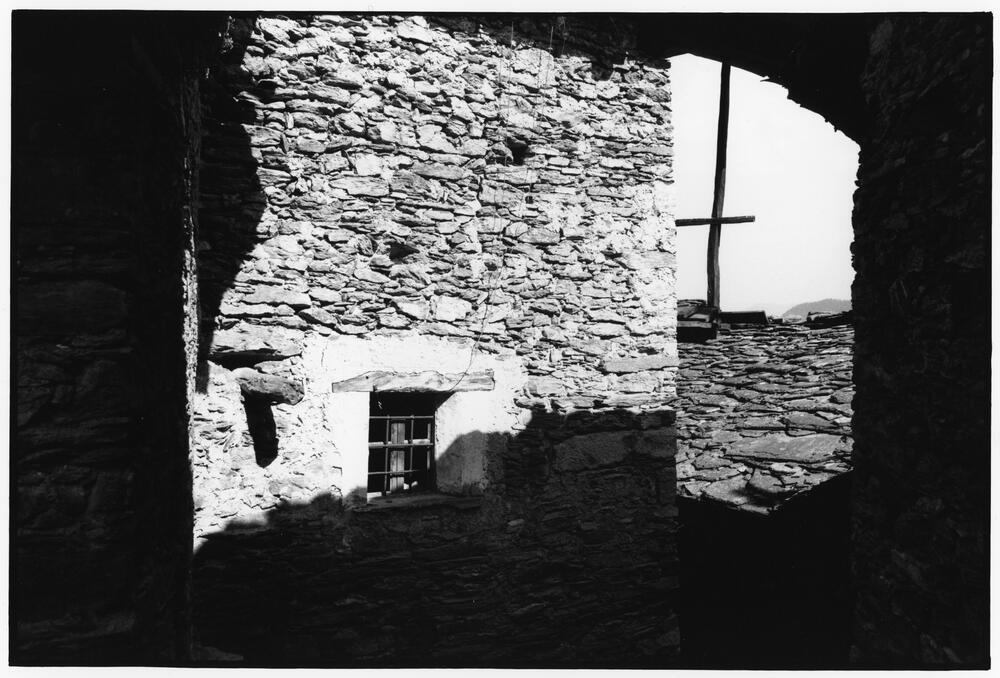
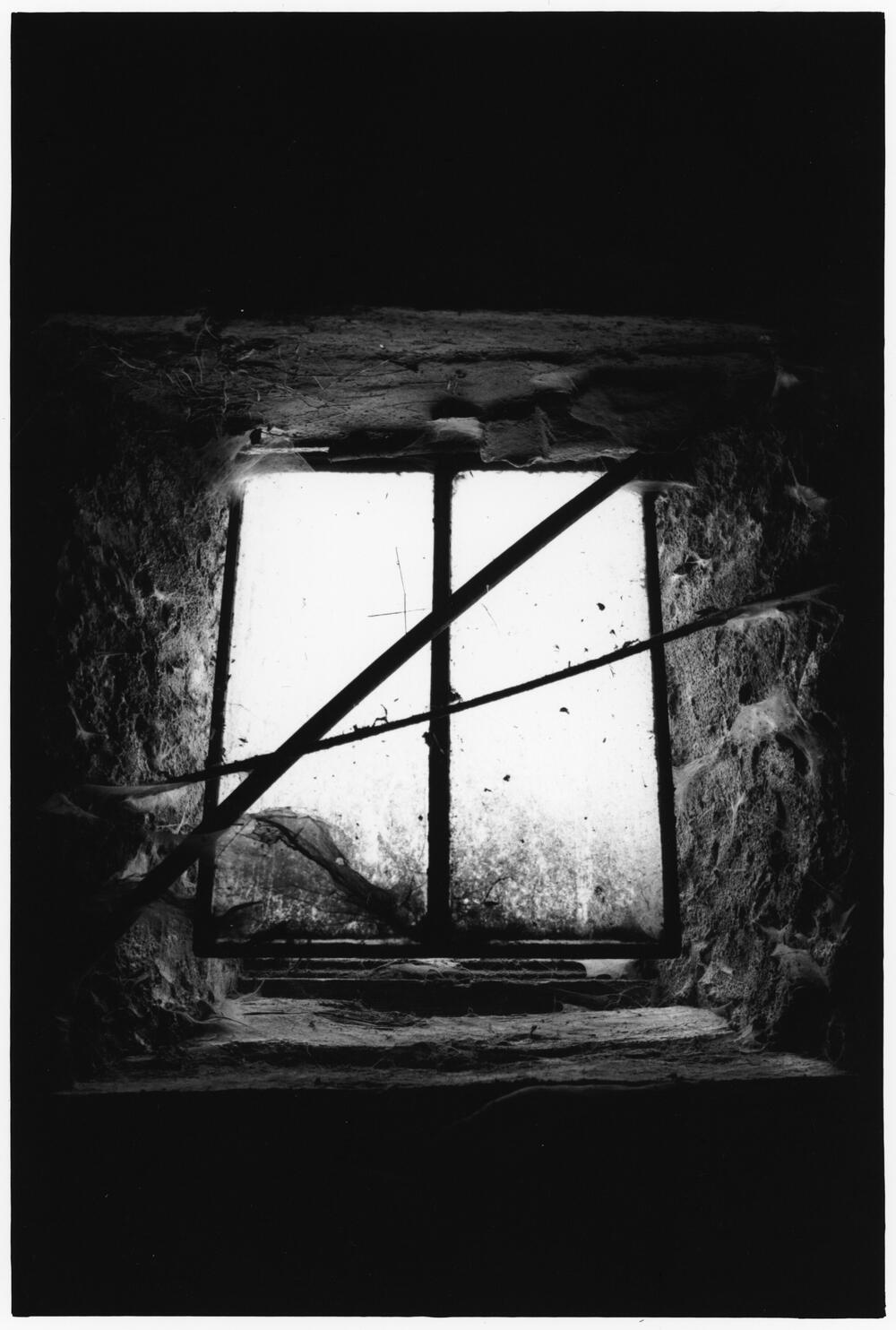
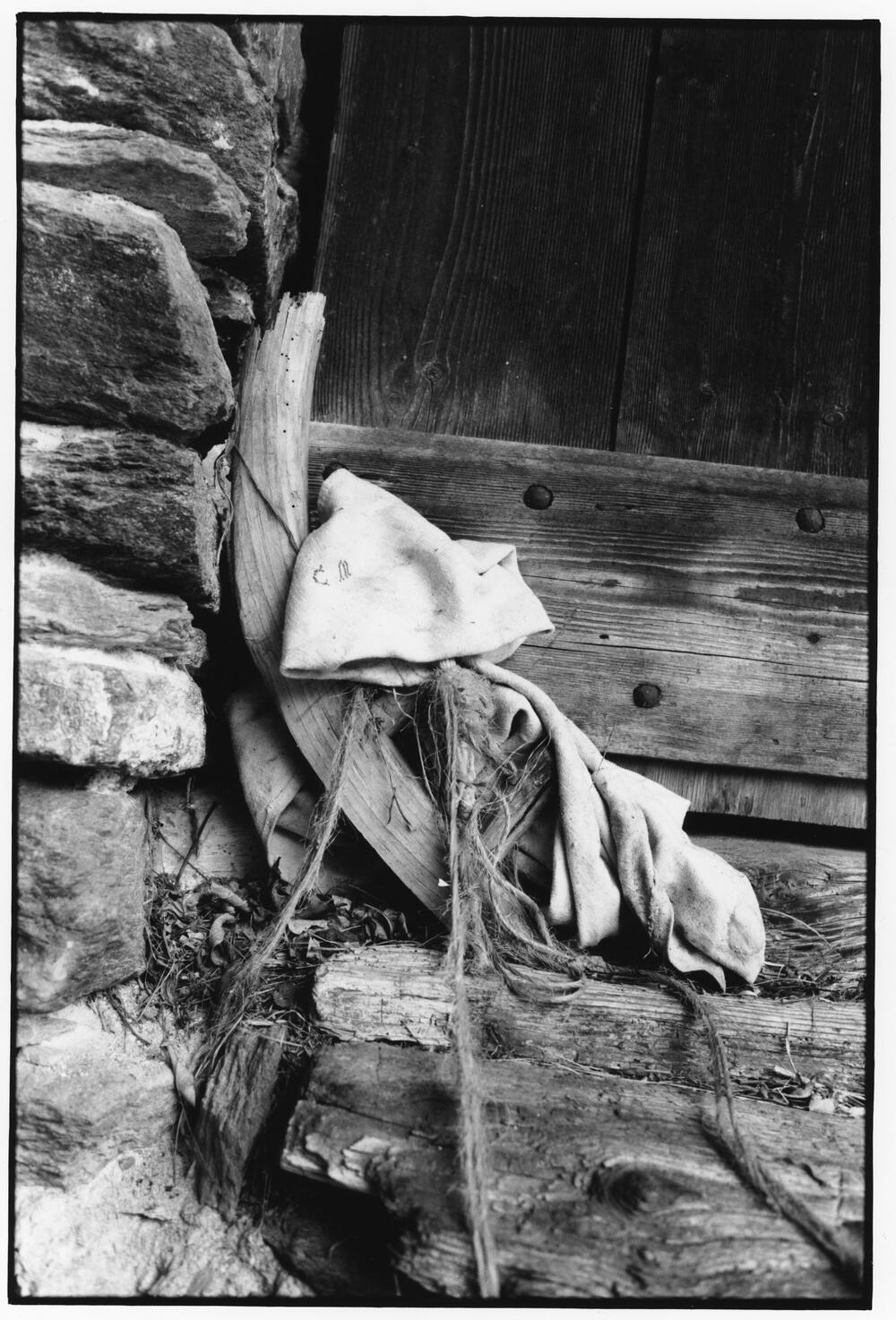
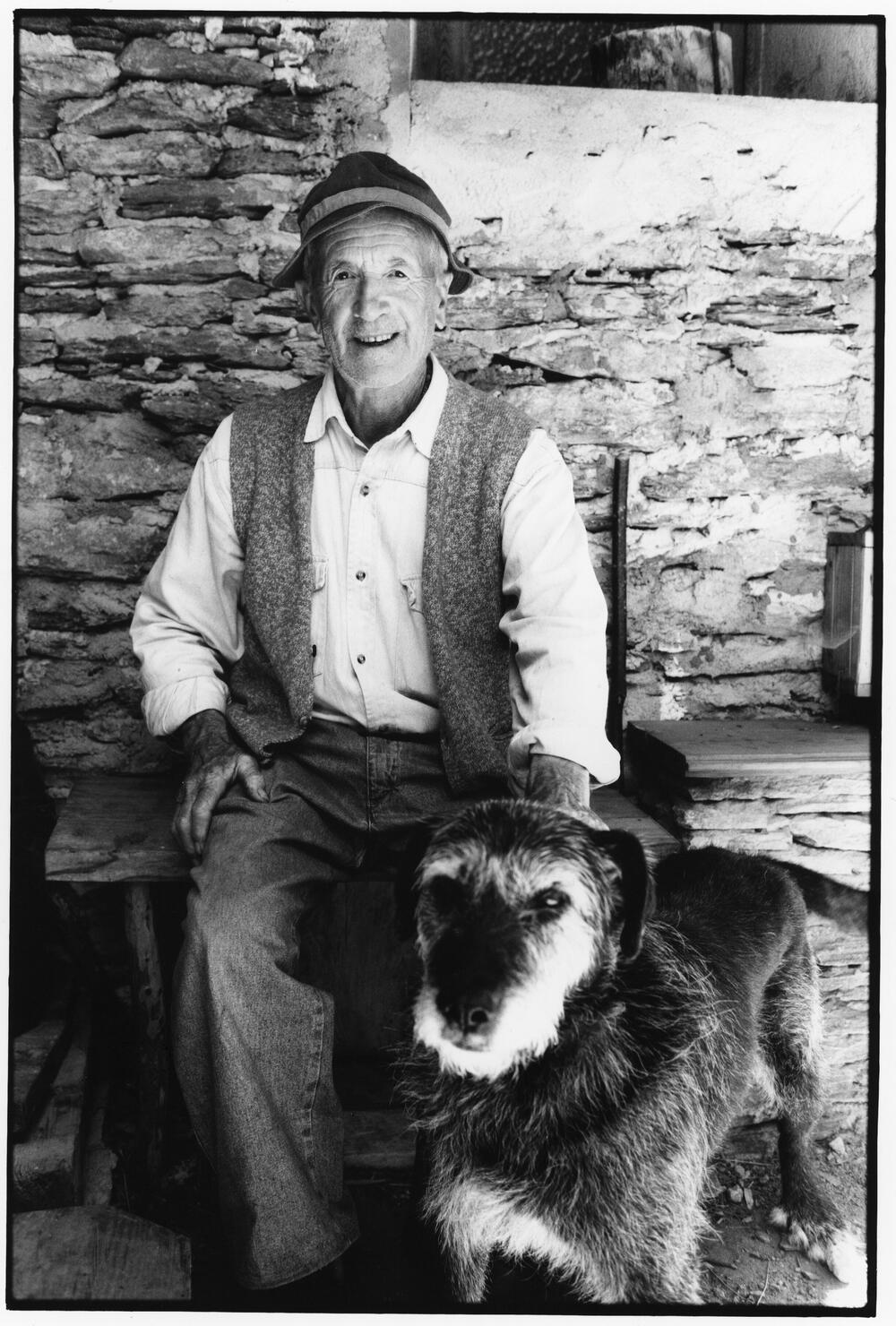
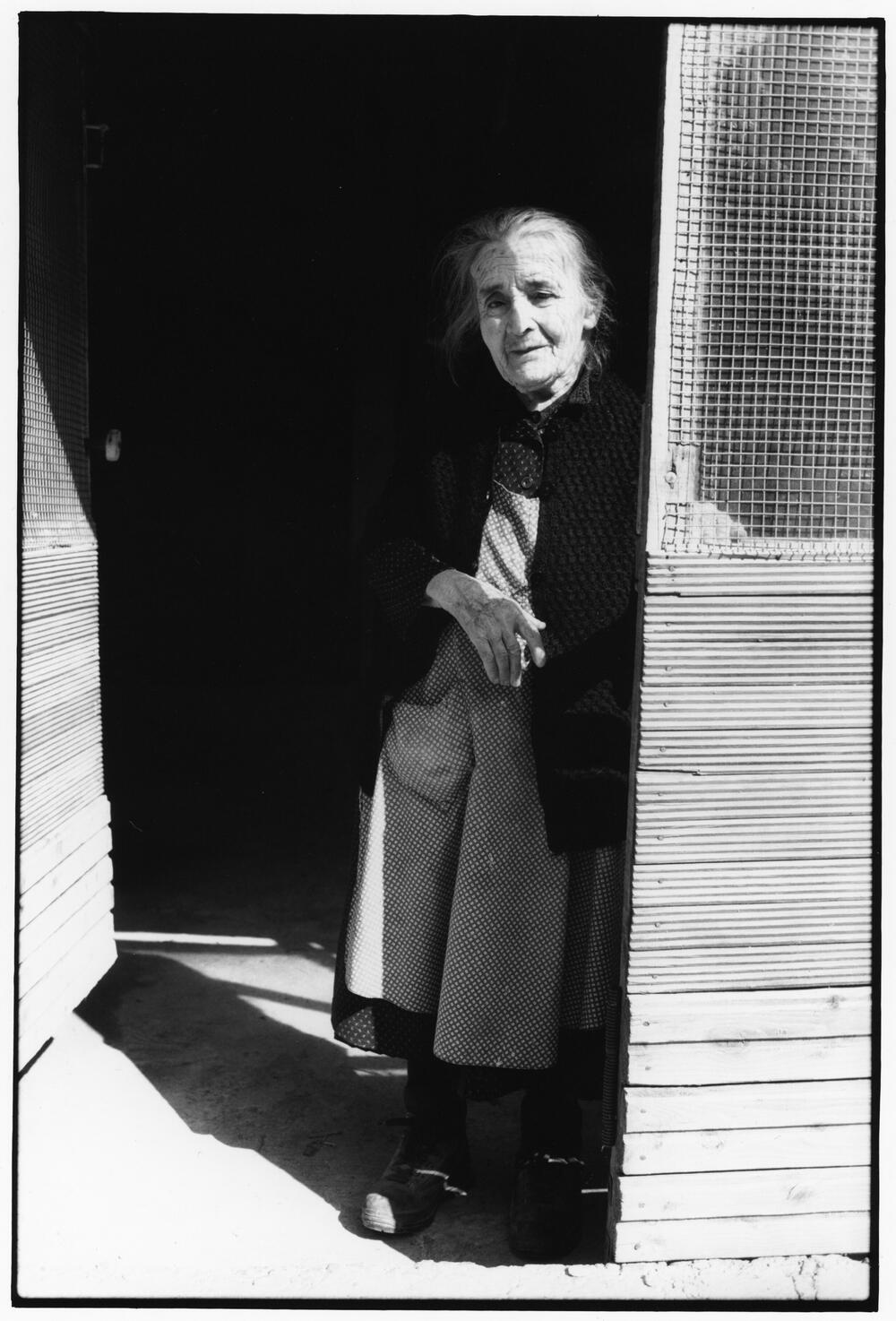
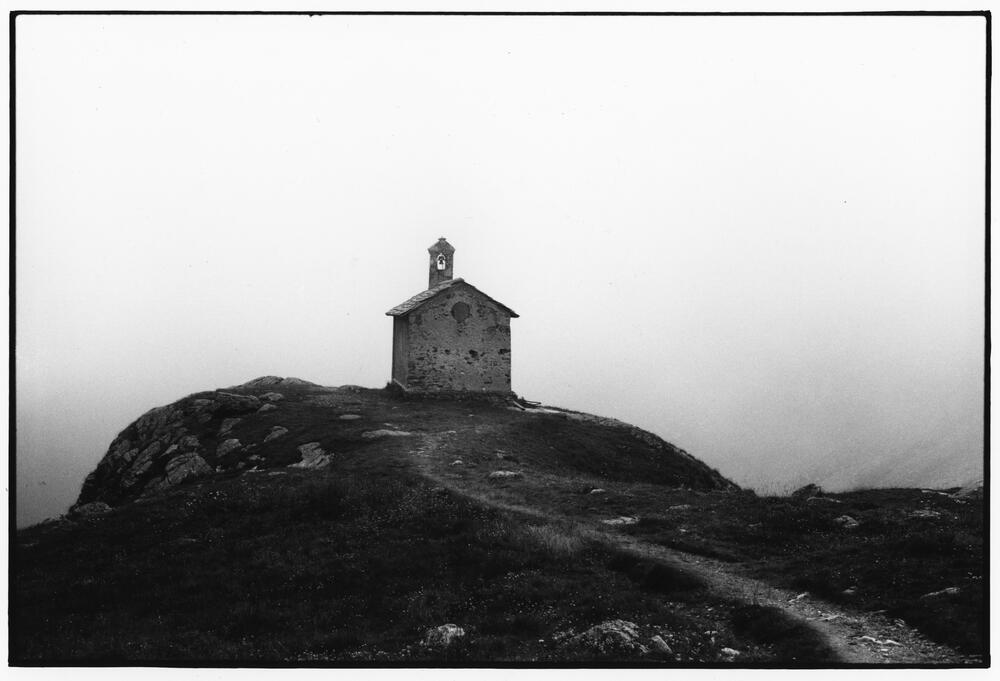







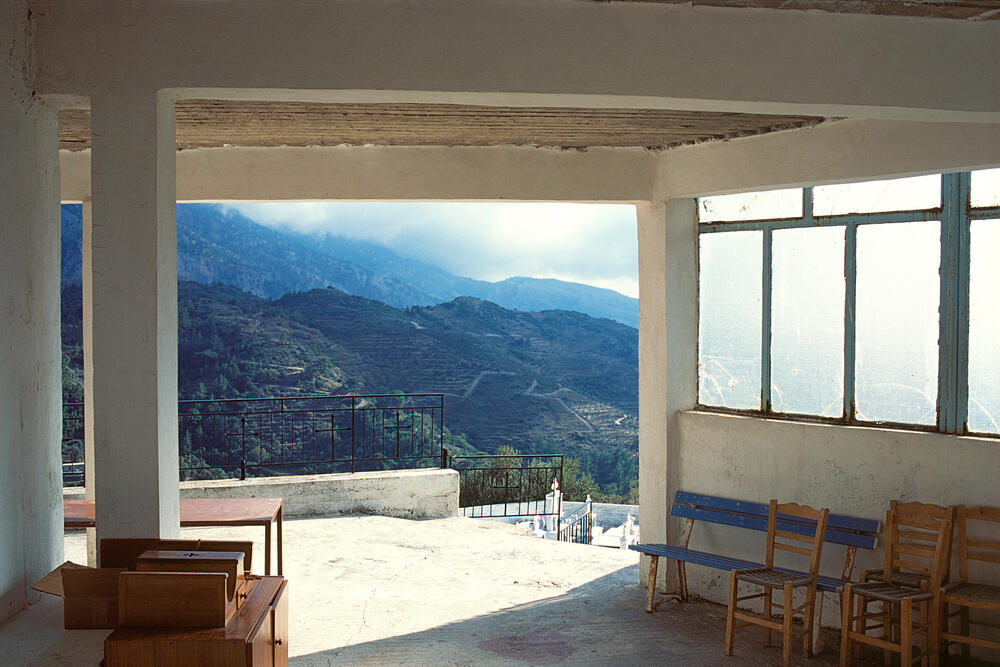
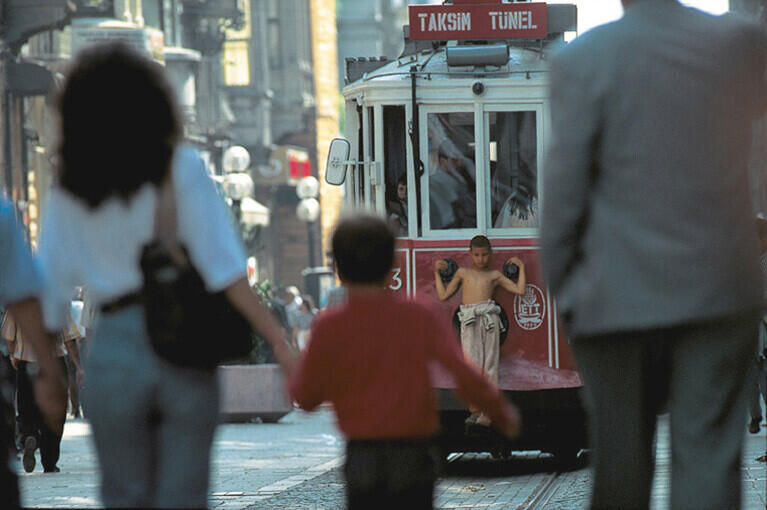
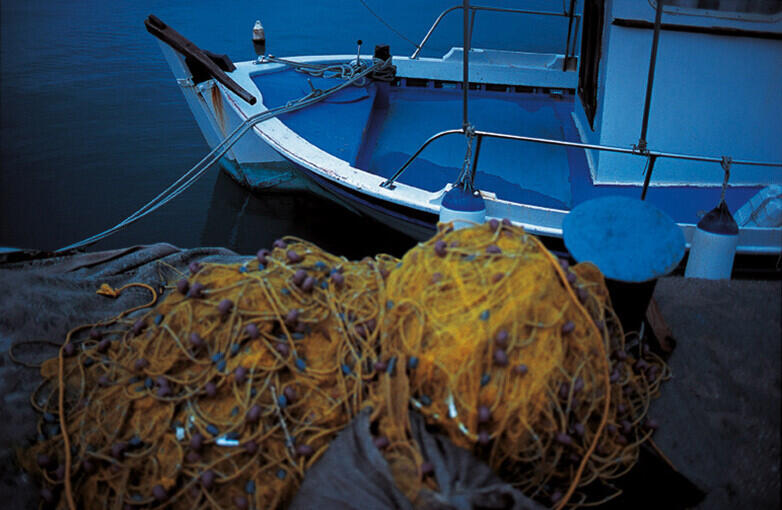
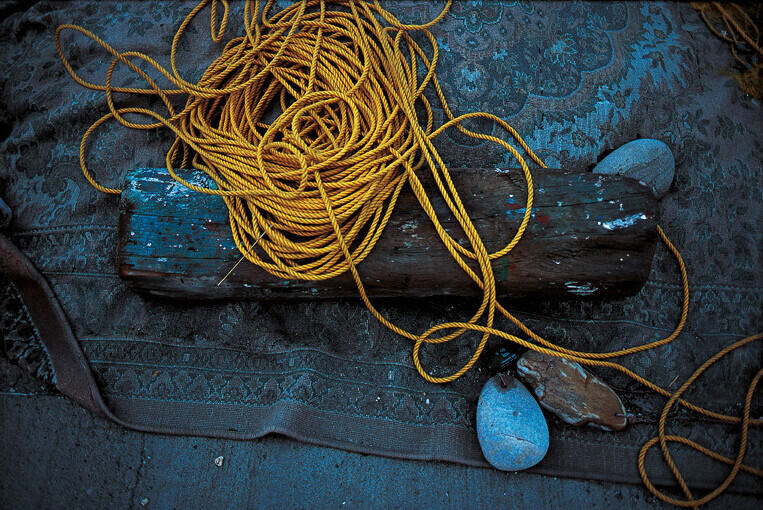


The frames of these images switch like the takes of a lively cinema film. Close-up, detail, middle distance, vista shot, view from above, more rarely from below, eye-level take or two-shot follow each other at a brisk pace. Referring to takes rather than frames, even though the work consists of photographic rather than film images, corresponds to the idea that their author, Olaf Schlote, pursues with his work “Beyond human nature” — and not only in formal terms. Schlote is both a photographer and an artist, although such statements seem pleonastic in face of his high-quality aesthetic photos. Surely photography conquered the realm of art long ago? Schlote’s images, however, make us aware of the severe losses incurred during this victory march. For they re-emphasise the photographic at the expense of the artistic, yet without neglecting the latter in any obvious way.
The photographs — to use Siegfried Kracauer’s somewhat starchy terminology — maintain the balance between realistic and form-giving tendencies. By not divulging the specific character of the photographic medium, they preserve a reference to the concrete world, which presents itself to perception as visible reality.
But the artist in the photographer Olaf Schlote is not satisfied with depicting merely superficial visible phenomena, by any means. The title of his work permits no doubt as to his intentions: “Beyond human nature”. The “beyond” expressly points to a moment surpassing simple empiricism. On the other hand, there are those — like Bertolt Brecht — who deny that such things are at all possible using the photographic medium. What insights, he enquires polemically, can a photograph of the outside of a factory convey into what takes place within? Practice, or so it would seem, concedes this point. Despite the floods of images produced by photographic, electronic or digital technology that currently zoom across the globe in real time, our world is becoming less and less accessible to their recipients. And if, like Marcel Proust, one regards photography as a vivid documentation of the alienation of people and objects, one could even conclude that this situation stems from the very nature of the medium. Nonetheless, the photographer-artist Olaf Schlote succeeds in probing beyond the surface membrane with his photographic images. He opens up perception further; to contexts which are not evident, but nevertheless catch one’s eye all the more effectively, the deeper one immerses oneself in his pictorial universe. In fact, his pictorial universe is anything but unusual; it consists of many familiar details — all too familiar details. Only occasionally do shots and sequences emerge which appear to extend the horizon of everyday experience in a metaphysical sense. The people, young and old, the landscapes, the flowers, the animals, some in high-contrast black and white, some in complementary colours — which of us has not already encountered them before, in other pictures or in reality? Somewhere… Nor does the individual shot — at least this is true of most of them —, despite a carefully selected frame and nuances of light, in any way explode the framework of the photographically possible. Rolled up ropes, birds — some not yet fledged and only recently hatched —, cups of steaming espresso, portraits; some of this, using a phrase coined by Marlene Dietrich in conversation with Maximilian Schell to apply to herself, has already been “photographed to death”. No, the individual shots — although most of them determinedly adopt a standpoint opposing the glossy, perfection-seeking aestheticism of illustrated magazines — do not convey the truly remar kable in Schlote’s universe. Rather, it is the deliberated linking up of these images to create a predominantly paratactic sequence, connecting each individual shot to the others, both directly adjacent and more distant. It is the cinematographic element that gives his oeuvre such extraordinary status. It amalgamates the diverse visual impressions of the individual images to create a self-contained world; a world which, due to the technology employed, is firmly anchored in the here and now, but nonetheless radiates beyond the limitations of the merely visible. All at once, a plausible logic unfolds in the sequences of images, assembling the apparently heterogeneous pictorial aspects into an aesthetically convincing mosaic. However, anyone assuming that the logic of the pictorial sequence only flows in one direction — teleologically, that is — is soon disappointed, like those who believe that the images must retain a specific, absolute sequence in order to create the effect sought by their author.
The order is not arbitrary, certainly. But it does not obey any external formal doctrine that the artistphotographer imposes on the photographs, either. The overlapping effect of the individual pictures results solely and exclusively from the sparks that are ignited when they are brought together. One image alters the next, at first imperceptibly and then more radically, and a third — in its turn — alters the two we have seen before. The images complement one another mutually, adding something that is already present in a latent form, certainly, but not necessarily emphasised. To be more precise: not only does the sequence of the diverse images further — as in journalistic photography — a story and its message. It is as if each image already holds the entire story or at least the heart of it within, and this becomes visible when several photos form a concert; they begin to develop a dialogue or a “conver sation” of many voices. In this sense, the comparison of Olaf Schlote’s work with a mosaic is rather inadequate, for the individual stones of a mosaic are insignificant in content. Because of the intensity of the photographer’s artistic vision, the concealed wealth of each individual image is only fully revealed, in a certain sense, through the other photographs. All of his images are positively seared by this intensity. His artistic vision thus crystallises on the level of visual signs and symbols, but also on the structural-formal level of the works’ aesthetic execution. It emerges from a patient, precise observation of phenomena, even when the photographer captures a movement spontaneously. The artist’s powerful imagination lends the images an imperceptible coherence, which should not, however, be confused with uniformity. For the stylistic breaches are striking and intended, and the structure is elliptic. Lyrical and prosaic photographs cannon into each other abruptly; staged and registered images, the objective and those with a basically floating mood, shots of bitter seriousness and warm humour, black and white and coloured images, blossoming and passing, the large and the small.
Usually, Schlote’s attention is directed towards things on the periphery; things which are not worth a glance to any amateur photographer, which no ambitious hobby photographer is prepared to ennoble aesthetically. All things in his artistic universe are interdependent, but nowhere does this stray into the arbitrariness of “anything goes”. In a single sentence: Schlote’s images describe nothing less than the cycle of life, from birth to death.
From the perspective of the philosopher Georges Bataille, man — as a conscious being — experiences this life as a state of painful discontinuity. He is haunted by a subliminal longing for the unity with nature that he has lost. This unity has been violently interrupted through birth. The state of discontinuity is finally abolished in death, which is simultaneously the basis for many forms of new life; the “petit mort” of sporadic, orgiastic union can only overcome the fundamental discontinuity for a short time. By contrast, the contemporary variant of “life science” emphasises the necessity for an interplay of nature and culture, body and mind, “vegetative”, “animalistic” and “intelligent soul” (Henri Atlan) — not that this comes about without disturbances, swings and contradictions — in order to escape the narrowing constricts of deterministic thought and to win back the freedom of discourse that once characterised art as well. This notion has more affinity with Schlote’s work. Amidst the quiet current of his images, such interplay appears astonishingly vivid, although the artist is probably unaware of the new epistemological paradigms. Strikingly, there are numerous views and vistas in his photos, envisioning the artistphotographer’s positive attitude. A mullein survives in inhospitable terrain. The tone of the images is coherent: a bird in the hand of a boy standing on rough stone steps, three cheeky puffins on the grass, or the yellow bowls of Arctic poppies reaching triumphantly towards the sun amidst a craggy, black, jagged landscape. Or the contrast of the pink blossoms and dried-up branch of a bush on a rocky cliff, of rain clouds and rainbows, the drama of people on an improvised stage and the rendezvous of fruit at a market. The gathering of people who remained strangers to him in the Paris district of Barbès, and the majestic Cappadocians. The images are filled with a constant arrival and departure. In one photograph, Schlote cites the key image from Chaplin’s cinematic masterpiece “Modern Times”. Not least, there is the sequence of a journey from the forest to the sea, displaying the magical power of Fellini, and a disturbingly sober, barren triptych entitled “Requiem”; linking the opposites, building bridges rather than blurring the differences. Finally, in dedication to a fallen owl, Schlote creates a burial ceremony resembling that of an Indian chief or a powerful ruler of past cultures, and a triple diorama with powerful, lucid colours that seem to proclaim the ultimate victory of life over death.
Almost all of his photographs convey the feeling that their author sees himself as part of what he has recorded with his camera; a feeling intensified with tangible suggestiveness. Schlote incorporates the viewers into his pictorial world. Through the act of reflective perception as an open-ended process, they symbolically absorb the subject of the images. On the other hand, a small number of photos have such large formats that the viewer is integrated into their territory in a positively physical way: “Arrival”.
And his large-format dioramas create an atmosphere “transcending” mere corporeality, like the world that unfurls in the dark auditorium of a cinema…
Klaus Honnef